#Vodou altar
Explore tagged Tumblr posts
Text
Erzulie Freda.
Okay. When I saw this I had to share it. This is from Houngan Jak. A doll of Ayibobo Mambo Maitresse Erzulie wearing beautiful real jewelry and clothing.
(If you're wondering. Ayibobo is a ritual word that's a equivalent to “Amen” or "Blessings" and a few other meanest depending on how it's used)
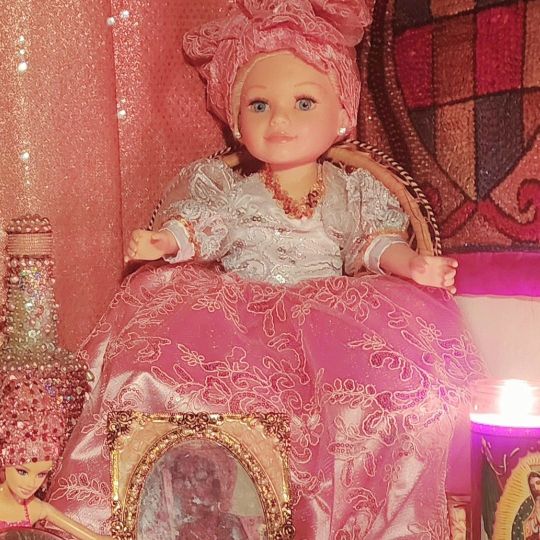
👇Next is a photo of her being bathed in and bath made for her.
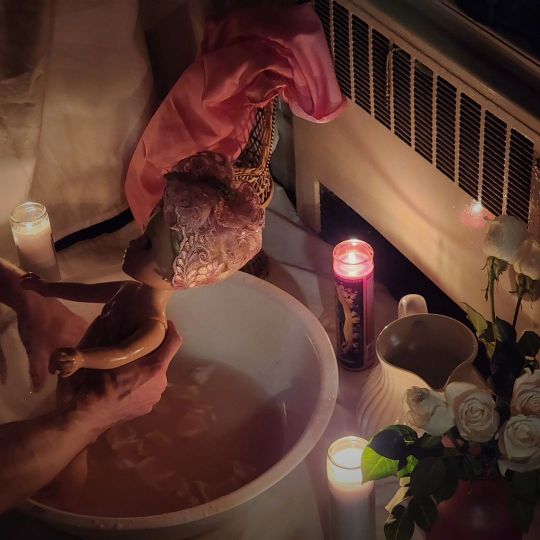
👇This is her altar. With items that she loves.
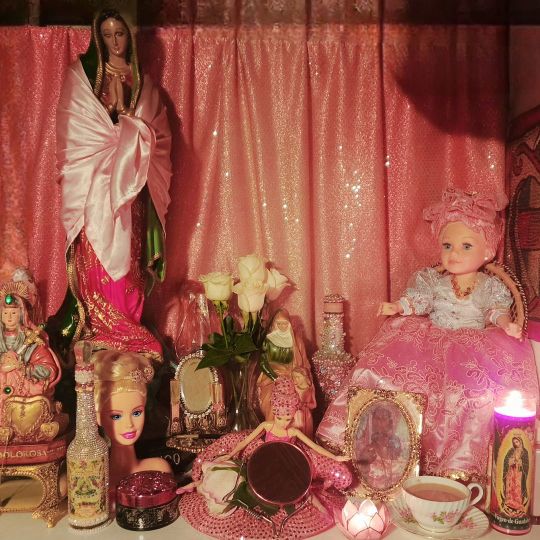
👇Oh, Check this out a Florida Water bottle created for her.
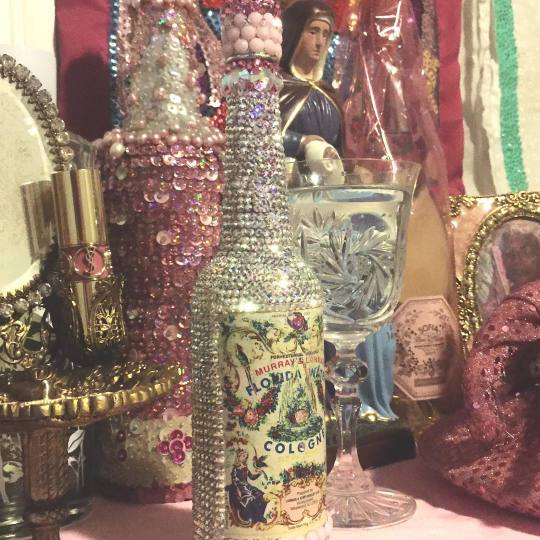
These aren't my photo they belong to Senjsk a Vodou priest. I just wasn't to share these.
If you are a devotee of any spirit, deity, Gods, Ansestors etc Look at the things they like or tell you they like and create something personal for them that comes from you.
They'll like it.
#like and/or reblog!#spiritual#rootwork#voodoo doll#vodou lwa#vodou deities#Erzulie Freda#Vodou altar#Florida water#haitian vodou priest#haitian vodou#follow my blog#african diasporic#african spirituality#african vodu#Vodou deity#Voodoo spirit#ask me a question#message me#Message for help#Spirituality#spiritual help#spiritual guidance#Custom work
18 notes
·
View notes
Text
Death Witchcraft: An Exploration
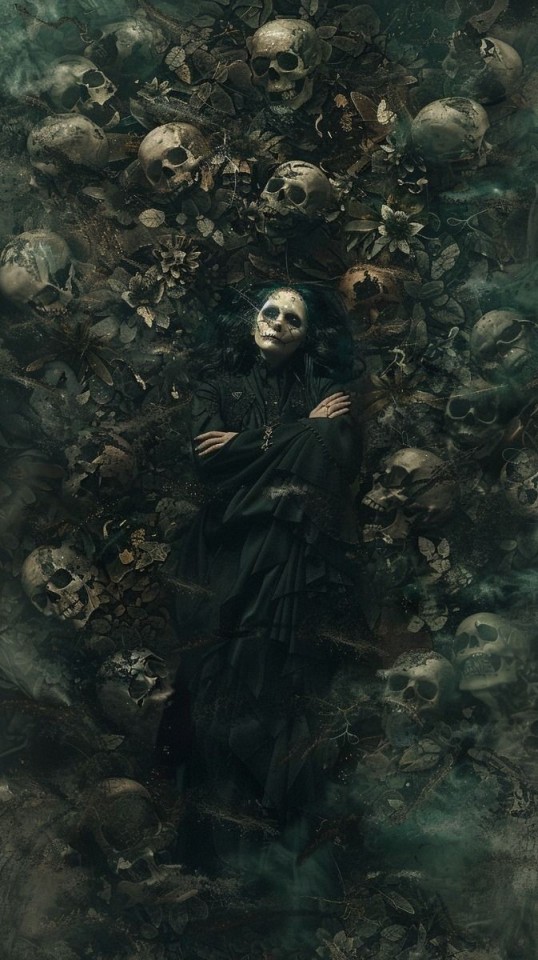
Death witchcraft is a branch of occult practice deeply connected with the mysteries of life, death, and the transition between the two. It involves working with the energies surrounding death, the afterlife, ancestors, spirits, and the unseen realms that lie beyond physical existence. The practice is often misunderstood due to its association with darkness, fear, and taboo. However, death witchcraft is a deeply transformative and powerful path, one that offers healing, guidance, and a deeper understanding of existence and mortality. It is not necessarily about harming others, but rather engaging with the sacred and mysterious forces of life and death in ways that can lead to empowerment, spiritual growth, and the honoring of those who have passed.
Core Principles of Death Witchcraft
Death witchcraft revolves around several key principles:
• Honor and Respect for Ancestors: Ancestor veneration is an integral aspect of death witchcraft. Practitioners often work with ancestral spirits, seeking guidance, wisdom, and protection from those who came before them. Through rituals, offerings, and prayers, death witches maintain strong connections to their ancestors, ensuring their spirits are honored and respected. This work can help heal generational trauma, discover hidden family wisdom, and preserve the energy of the ancestors within the practitioner’s own lineage.
• Reverence for the Cycle of Life and Death: Death witchcraft embraces the natural cycle of life, acknowledging that death is as much a part of life as birth. It does not seek to control or avoid death, but rather understands and respects its role in the cosmic order. Death witches work with death as a transformative force—whether through spiritual transformation, endings, or transitions. Their practice includes rituals for rebirth and regeneration, as well as rituals to honor the dead and assist them in their journeys to the afterlife.
• Communion with Spirits: Death witches frequently engage in communication with spirits, especially those of the deceased. This can include ancestral spirits, beloved departed, and even spirits who may still be trapped between worlds. Communication is facilitated through divination tools like spirit boards (ouija boards), pendulums, scrying, or simply invoking spirits during meditative or ritual work. Some death witches work as mediums, facilitating communication between the living and the dead.
• Working with the Underworld and Deities of Death: Many death witches also work with deities or spirits associated with death and the underworld. In various cultures, these deities are seen as guides for the dead, as well as rulers of death and the afterlife. Deities such as Hecate (Greek goddess of the underworld), Hel (Norse goddess of the dead), Anubis (Egyptian god of mummification and the afterlife), and Baron Samedi (Haitian Vodou loa of the dead) are frequently invoked in death witchcraft for their wisdom, protection, and assistance in working with death-related energies.
• Rituals and Ceremonies: Death witches often perform rituals and ceremonies to mark and honor death. These may include funeral rites, memorial services, or specific rituals that allow the practitioner to connect with deceased loved ones, guide souls into the afterlife, or work through personal grief. Rituals can be solitary or communal and may take place in sacred spaces such as graveyards, cemeteries, or even the practitioner’s home altar.
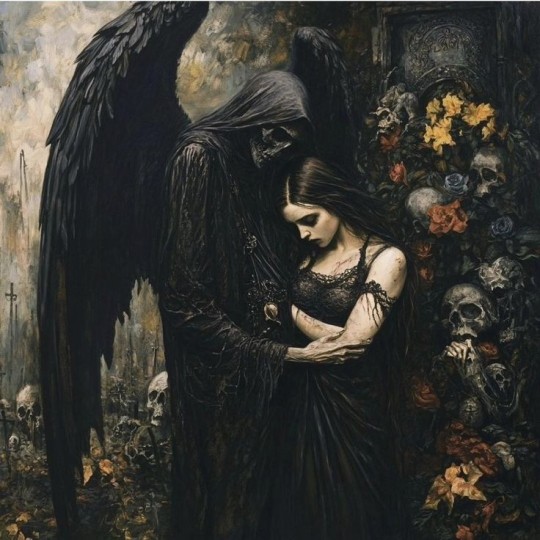
Magickal Practices in Death Witchcraft
• Necromancy: A cornerstone of death witchcraft is necromancy, the practice of communicating with and working with the spirits of the dead. Necromancers—often considered to be death witches—may use tools like spirit boards, pendulums, crystals, or scrying mirrors to summon and communicate with spirits. Necromancy can also involve rituals to help spirits move on, protect the living from malevolent spirits, or gain insight into future events by consulting the deceased.
• Spirit Work: Spirit work goes hand in hand with necromancy, though it is not always about divining or commanding spirits. Spirit work in death witchcraft involves developing a deep relationship with the spirits of the dead, listening to their messages, and sometimes offering spiritual assistance. Death witches may dedicate spaces on their altars or in their homes to honor these spirits, offering food, trinkets, or symbolic items to maintain good relationships and receive guidance.
• Psychic Development: Many death witches develop their psychic abilities to perceive spirits, energies, and otherworldly dimensions. This may involve cultivating clairvoyance, clairaudience, or clairsentience (the ability to perceive spiritual energy or communicate with the dead). Through meditation, divination, and dream work, practitioners can enhance their sensitivity to the spirit world and develop the skills necessary to work with death in a more intimate way.
• Death-Related Divination: Death witches often use divination to understand the mysteries of life and death. They may practice tarot, runes, or bone reading, methods in which the symbols or objects used represent the interconnectedness of life and death. For example, certain tarot cards like Death or The Hanged Man symbolize transformations, endings, and rebirths. Practitioners may turn to these tools to gain clarity on matters of life transitions, cycles, and endings.
• Baneful Magick: Some branches of death witchcraft include working with baneful magick—spells meant to harm, curse, or protect against malevolent forces. This can involve using death-related symbols, graveyard dirt, or other elements connected to death. However, these practices should be approached with caution, as they are often considered ethically and spiritually dangerous, carrying consequences that may affect the practitioner.
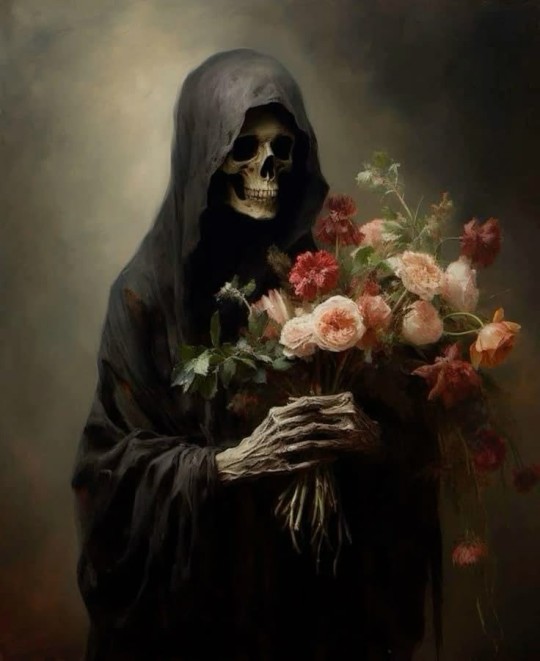
Death witches can be spiritual guides for those dealing with grief, loss, or personal transformation. In many cultures, they may serve as shamans, healers, or mediators between the living and the dead. They may be called upon to perform rituals for the deceased, help souls find peace, or provide guidance to the living regarding their own mortality or transitions.
They also play an important role in facilitating spiritual healing. Many death witches assist individuals in releasing attachments to loved ones who have passed or help them make peace with death. They may use rituals to help heal grief or even to address fears surrounding death. By acknowledging and embracing death, these practitioners help others live more fully, knowing that death is an inevitable part of existence.
Although death witchcraft can seem mysterious or dark, it is not evil. In fact, it is an inherently respectful practice that seeks to understand, honor, and make peace with the natural world’s cycles. However, as with any form of magick, it is crucial that practitioners approach death witchcraft with respect, responsibility, and reverence for the forces they work with. Working with spirits, especially those of the dead, requires a deep level of discernment, sensitivity, and ethical awareness. Practitioners must be cautious when invoking spirits, ensuring they maintain healthy boundaries and avoid harming others.
Death witchcraft is a deeply transformative and sacred path that connects practitioners with the timeless mysteries of life and death. It is a practice that encourages reverence for the dead, for ancestors, and for the cycle of existence itself. Through communication with spirits, necromantic practices, and rituals focused on transformation, death witches help others understand their relationship with death and the afterlife. The practice offers spiritual growth, healing, and empowerment, guiding both practitioners and their communities to embrace death as a natural part of the human experience—an experience to be honored and respected, not feared.
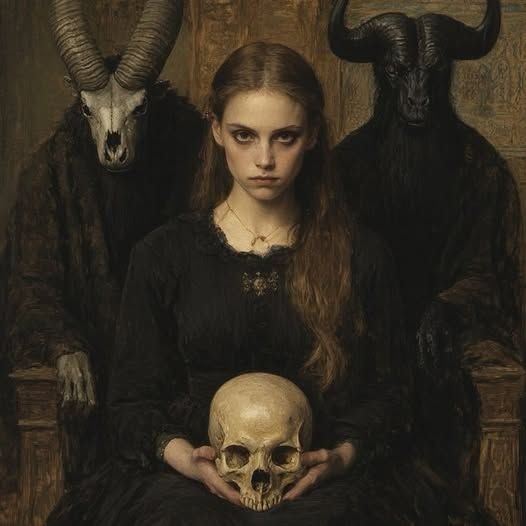
#death witchcraft#death witch#death work#spirit#spirit work#necromancy#necromancer#witch#magick#satanic witch#lefthandpath#witchcraft#dark#satanism#witchblr#witch community#psychopomp#eclectic witch#eclectic#pagan#esoteric#occulltism#occultism#occult#demons
37 notes
·
View notes
Text
House of Voodoo - A CC collection
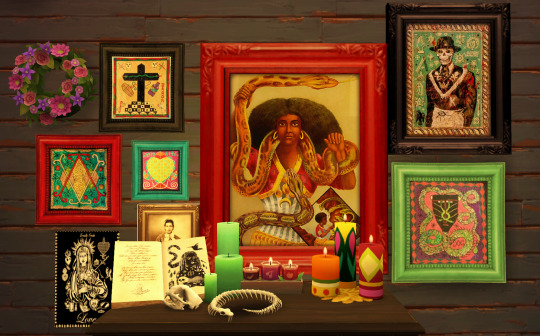
I finally re-worked my House of Voodoo set ! In the process of remaking my Voodoo shop lot, I got inspired to make some new recolours to decorate the lot and give you more voodoo/vodou original content. This set is required for the lot to function as intended.
Set info & Download ⬇
This is a set of 7 objects (recolours only).
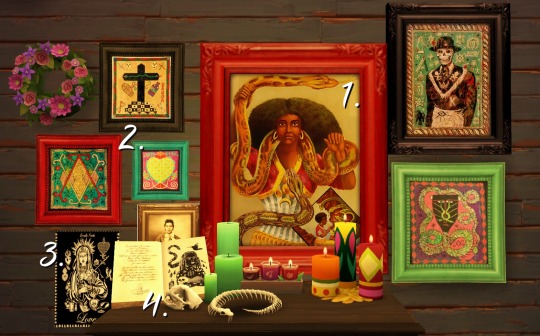
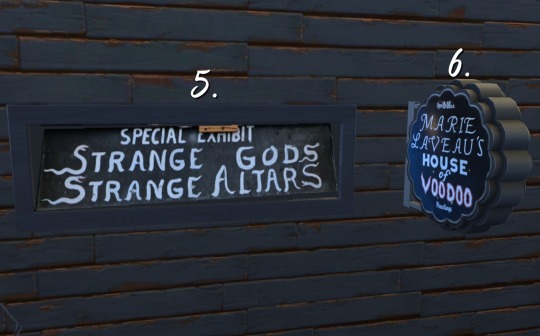

- 1. Powerful religious figures portrait. 10 swatches. I think you need Living Together for that one. I’m working on more swatches, stay tuned ! - 2. Vodou flags/drapo. 10 swatches. Pretty sure it’s BGC.. - 3. Vodou posters. 10 swatches. Requires University! These are the ones you can spot on the shop’s wall ! - 4. The Book of Voodou. This is a bit of an experiment, I wanted to try myself at retexture non-flat objects. MESH REQUIRED *find it here* (you only need the botanical book open book) - 5. Entrance sign (’Strange gods, strange altars’). Base game compatible. - 6. Marie Laveau’s shop neon sign. Requires City Living ! also it’s a bit big but ya know, just shrink it. It’s not perfect especially when it lights up at night but I like it the feeling of it! - 7. Vévé (traditionnal Vodou sigil). Requires Realm of Magic! 5 swatch, find it under ‘rugs’. I’m working on more swatches ! I’m also trying to transform it into a meditation spot, if anyone knows how to do that...
Download (sfs, no ads)
#voodoo shop#voodoo#ts4cc#ts4 paintings#ts4 decor#sims 4 cc#ts4 simblr#ts4 witch#sims 4 custom content#marie laveau#ts4 halloween#simblreen#sims 4 realm of magic#mycc#new orleans
126 notes
·
View notes
Note
Hii ik saw me many times but i love your blog so much about hobie and Miguel i have questions have any hc hobie being west African hc of that been there since watched movie i cannot get it out
I AM GOING TO SCREAMMMMMMMMMMMMMMM AT THIS BECAUSE YES YES I CAN
(also sorry if this is kinda Yoruba centric!! cause that's the area I know the best - for reference I myself am Bajan/Quechua (West Indies - Barbados / Indigenous Peruvian))
West African!Hobie Headcanons:
And because I'll never get a chance to talk about this again I'm gonna start off with the one I love most and the one people know most about (and that is demonized - literally - the most)
Hobie and Vodou (aka VooDoo):

Yeah, I said it. Hobie can work. He got juju. He rootworks. He conjures. Whatever iteration, whatever title - if Hobie followed any religion it would either be Buddhism, which some argue that some sects can double as a moral philosophy,
-If he'd respect any religion. It'd be a Traditional African one and I'm putting money on Vodou.
[And heads up, I am not an initiate of Vodou, but I do actively practice African Traditional Spirituality (HooDoo/Rootworking) and Ancestral Worship. So take from that what you will.]
First of all - how punk would that be??? A West African religion demonized by the western world for centuries from Africa to Haiti to Louisiana - that praised ancestral worship and community first???
YES PLEASE. Some people might not really understand all of this but:
First things first, yes, he speaks Yoruba and if you call it 'Speaking African' he's going to flay you alive.
Like????? Hobie sweet talking in Yoruba??? I'll throw my self on the floor right now!!
Hobie practicing ancestor worship - and thanking all the oppressed people who gave their lives and suffered daily so he can live his life?
He'd have an altar in his house, a small one he keeps out of sight, even to Gwen.
Leaves offerings and bits of his meal on the altar. Cause he was once food insecure, but now that things are a little better, he can do that
Like even if he practiced a form of HooDoo or another sect that derives from Traditional African Spirituality (that doesn't involve initiation)
He'd want to give back to his ancestors, learn how to use natural herbs and work them, learning how to make powders, doing floor washes, sweeping a certain way
And having all of these routines related to his African spirituality that are so subtle but he thinks about always
Prays to his ancestors to give him strength when he's struggling with being Spiderpunk
BUT IMAGINE IF HE WAS INTITATED THO ????
Hobie in all white during ceremony???????
HOBIE BEING A CHILD OF SHANGO??????????

NAH THEY AINT READY FOR IT
But even so -whatever Orisha got that boy head be putting in WORK.
And you know he keeps his beads on forever and always even under the suit!!!!
And the style!!! Hobie AfroPunk?!!!
I don't know if they have this elsewhere, but in NYC there's a music festival called AfroPunk - and it's full of black artists, and black people come out in these amazing outfits - and the goal is to incorporate as much African influence as possible
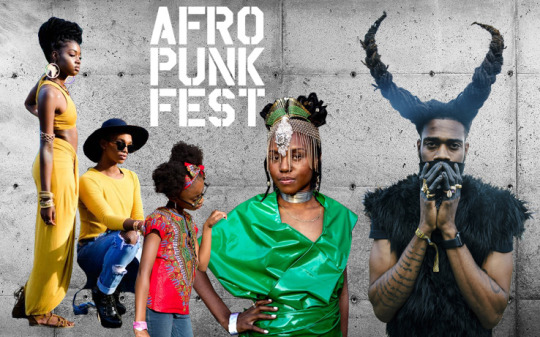
HOBIE WOULD EAT THIS UP.
The inside of his vest being lined with African textile!!
He takes it off in front of you and you see that little pop of that of classic orange-gold color

You just know he's wit it!!!
And the BEADS
(He should wear beads he's royalty compared to the raggedys at HQ)
[Cough] red and white shango beads [Cough]
Imagine Hobie giving his girlfriend a coral bead bracelet too AWWW
And telling them the significance??!!
He loves a woman in a headwrap. GELE ESPECIALLY but any type
And if you wear waistbeads UMMMMMMMM
As soon as he sees it peeking from under your shirt - IT'S GAME OVER
He's gonna wanna test if they working how they supposed to IF YOU KNOW YOU KNOW.
AND The FOOD!
First of all - Hobie hates that British manners shit.
Was raised eating with his hands and loves it
He hates old white people who wanna stare cause he eats with his hands
He loves goat. Not me projecting he LOVES goat.
He really appreciates rice based dishes because they can fill you up - and you can't just buy them anywhere
Prefers Waakye to Jollof Rice but still loves Jollof
With FUCK UP some Fufu if he can get it
I say he eats standing up so he's just there at his kitchen counter eating Fufu and the most random shit in his fridge???
Like he'll be eating left over KFC with fufu - like what are you doing??? Thats - not a meal bro
He loves Okra (ew nasty ass) and he'll eat it all the time.
Especially fried okra but okra soup is cool too he's fine with that
His fried plantains go INSANE. They go SO HARD. They're to die for
He always picks the sweetest ones and it cooks them till they're all caramelized and shit YUMMMMM
(can you tell I like my plaintains sweet and soft cause I DO)
Extra Headcanons
He was not playing that when Gwen first came over - as soon as she stepped on the houseboat with shoes he was like "Girl-"
The first time Peter B. heard him speaking Yoruba he went "Wow, Hobie, Your Nigerian is great!"
Hobie, who already hates Peter B, looked at him like he was the dumbest mfer on earth like
'Right, and you speak American, right? Fucking bellend. I hate you. 'Nigerian'. It's Yoruba.'

(He's only saying that cause he hates Peter personally and wants him to have a bad day)
Meanwhile Gwen was nice enough to just ask "What language is that?" (The correct way to do it, do not assume language names like Peter)
First time he went over to Peter B.'s place (on Gwen's insistence), Mary-Jane accidentally swept over his feet before setting her purse on the floor
and in the moment he knew he had to leave.
He's a streetkid, but since he's in the neighborhood so much he has like 45 different women he calls auntie - and they make sure he has good food to eat because 'you are so skinny! you need to eat more.'
He does that auntie shit where you're walking with him and you see someone you know and now they're in a long ass conversation
Or when he says 'goodbye' then stands by the door having a conversation and you're standing there in your coat like....'fam are we out or not cause i can sit back down'.
He always goes to meet the elders of whatever house he's in to introduce himself, very respectful of black elders and enjoys helping old the older black folk in his neighborhood.
He enjoys giving them respect and hearing their stories, helping around the house. Plus he gets great food out of it
ANNDD That's all of them I think!! Sorry if any of these were off the mark - a lot of these are from personal things I know about West Africa and things learned through Spirituality. I hope I got everything okay!
Thanks for this by the way I LOVE Hobie and culture you know he'd be SO proud!!
[If you've read this far - maybe take some time out to learn a bit about African religions - they're beautiful practices (open to black people - we're worshipping black ancestors) - but you can still learn about them and understand how modern culture often demonizes these types of religions. If anything, I hope you learned a little from this! Hoodoo, Vodun (VooDoo), and Santeria (Latino witchcraft) are not scary, dark practices!] And because I spoke about spirituality, imma put this here cause DO not be playing yknowwhatimean
🧿
#I love talking about African Spirituality I hope I did it alright and justice#Most Vodou practitioners I know are Haitan so excuse any differences#no proofread as usu#hobie brown#hobie brown headcanons#spider punk#spiderpunk#across the spiderverse#atsv#across the spider verse
146 notes
·
View notes
Note
I am not Haitian, and practice a non-Vodou form of spirituality. For some reason, I have a strong feeling that Papa Legba has entered my life and blessed me. I feel a strong urge to thank him by doing something in return. What is the best way to express my gratitude? Is it appropriate for me to leave offerings for him in my altar, or would that invoke his ire? I do not want anything in return, I just want to serve him.
Stuff for the lwa really shouldn't go on space utilized for any other reason; they are less likely to be enraged and just more uninterested.
Charity is always a good option and honestly one of the best for folks who want to give but are removed from a community to support them. Make a donation in his honor or do volunteer work in his name. The lwa love charity, and request it often from their children.
Charities, nonprofits, and NGOs that help Haitians are a great choice. Some places to donate that I really like and that are reputable:
MamaBaby Haiti: This nonprofit is one of very few organizations in Haiti providing prenatal, delivery, and post natal care to pregnant people in the country. Haiti has an incredibly high infant mortality rate due to the lack of both providers and medical facilities to assist with birth. MamaBaby Haiti provides free care to any pregnant person who shows up AND they train midwives who can serve in their own communities. They have built birthing centers and they go by car, boat, and donkey to remote communities to provide care to people who cannot reach them. They additionally pay to get folks who deliver in a hospital out of 'hospital jail'; if you receive care in a hospital in Haiti and cannot pay, they lock you in and refuse to let you leave until you do which means people who have just had c-sections are sleeping on open porches on the floor with their newborns because they cannot pay the bill. MamaBaby Haiti will pay that. They are in desperate fundraising space right now; their operating costs are about 50K USD/month due to the incredibly high cost of everything in Haiti, and they have started shuttering their centers which serve literally thousands of people per month. You can see a lot of their work on Instagram, too, at MamaBabyHaiti.
P4H Global: this org trains teachers in Haiti, which is important work, but the founder (on IG as Bertrhude) has been a one woman fundraiser to provide support for the Kanal Pap Kanpe/The Canal is not Stopping movement. The local food economy has been decimated by food surplus donations from foreign countries, and local farmers have lacked infrastructure to be able to develop local crops to sell. Three canals have been or are being built in communities that rely on agriculture to survive. Berthrude has been tirelessly fundraising to provide materials--cement, steel, gravel--and paychecks to the communities who are building them. This has had tangible results; Haiti was once known as a rice-growing country, and that is returning. The canals have been able to provide the flooding necessary for rice, and as of today the second harvest is underway the KPK (Kanal Pap Kanpe) rice. The price of a sack of local rice in the north has dropped from roughly $1500 local dollars to $1000 local dollars, which is a MASSIVE drop in a country where many people survive on $100 local dollars or less per month. Berthrude has been transparent in her financial tracking and the amounts raised are truly incredible.
Haitian Bridge Alliance: this org has been active at the US southern border aiding Haitians and others who arrived seeking entrance. They have helped innumerable folks navigate the Biden program and have provided free legal services to basically any migrant they come across at the border. Currently, they are in communities in Mexico doing ad hoc 'know your rights' community meetings for Haitians wanting to cross. Additionally, their legal team has successfully done big things like sueing corrupt Haitian government officials in international court for crimes against humanity.
Health Equity International: this org funds and supports one of (I think) 4 free hospitals in the entire country, and that hospital (St Boniface) has the only spinal cord rehabilitation clinic in the country, the only NICU in the country, the only 24/7 trauma operating room in the country, and currently 1 of 2 emergency rooms in the country. Their work is astounding. I personally know people who would have died witho their care.
If you cannot donate money, donate your time and labor. Any organization that provides shelter to unhoused families in the US or Canada is receiving Haitians from the border and needs volunteers. Food resources like food pantries, soup kitchens, and community meals always need hands. If you can't do physical work, coordinate a diaper drive for your local family shelter or a winter coat drive (70 degrees feels cold for just arrived Haitians...). Make sandwiches for street outreach teams. Donate bilingual children's books to your local library. Stuff like that is gold to the lwa.
11 notes
·
View notes
Text

Are you scared yet???
When we hear of blood sacrifices what comes to mind?
Devil worshipping, doing something evil
And why and how did our preception of this become so?

Most of our perceptions of blood sacrifices comes from horror movies that are meant to cause over dramatic visuals.
When was the last time you saw a blood sacrifice?
People fear the unknown.
As European colonized the diaspora and Africa.
All aspects of African cultures especially the religion so to speak.
Random taunts of everything Africans did was devil worship and also Native Americans.
European's fear of the unknown, shifted the culture.

The same fault or superstition that was caste on Native Americans and Africans. Europeans are guilty of.
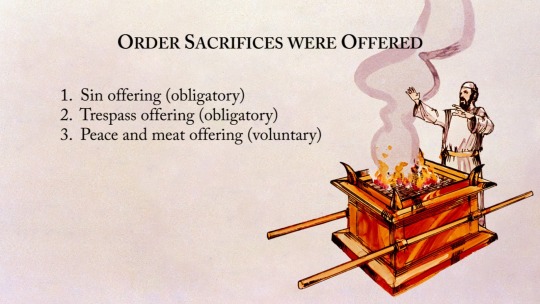
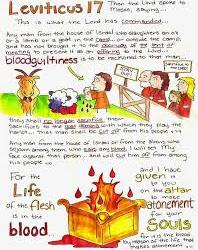
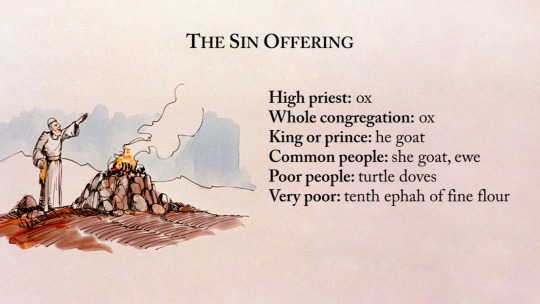
Leviticus 22:17-33 ERV
It might be because of a promise that person made, or it might just be a special sacrifice that person wanted to give to the LORD as a burnt offering.
If the gift is a bull, or a sheep, or a goat, the animal must be a male. And it must not have anything wrong with it. You must not accept any offering that has anything wrong with it. I will not accept that gift. “You might bring a fellowship offering to the LORD. That fellowship offering might be payment for a special promise that you made. Or maybe it is a special gift that you wanted to give to the Lord. It can be a bull or a sheep, but it must be healthy. There must be nothing wrong with that animal. You must not offer to the LORD any animal that is blind, that has broken bones or is crippled, or that has a discharge or a serious skin disease. You must not offer sick animals as a gift to the any animal that is blind, that has broken bones or is crippled, or that has a discharge or a serious skin disease. You must not offer sick animals as a gift to the LORD. You must not put anything like that on his altar. “Sometimes a bull or lamb will have a leg that is too long, or a foot that did not grow right. If you want to give that animal as a special gift to the Lord, it will be accepted. But it will not be accepted as payment for a special promise that you made.

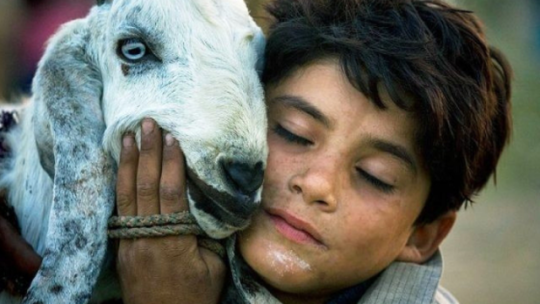
Qurbani means sacrifice. Every year during the Islamic month of Dhul Hijjah, Muslims around the world slaughter an animal – a goat, sheep, cow or camel – to reflect the Prophet Ibrahim's willingness to sacrifice his son Ismail, for the sake of God

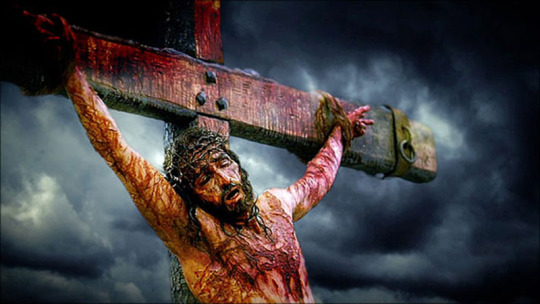
Human sacrifice???
A foundational doctrine of the Christian faith is that the sacrifice of Jesus Christ paid the penalty for the sins of mankind—that without this act of love by the Son of God, humanity would have no hope of life after death.
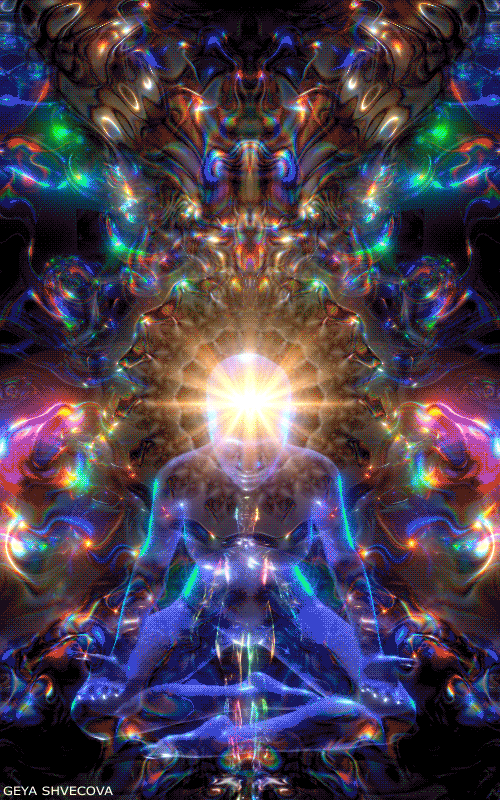
In the traditional Yoruba religion and culture, sacrifice is referred to as (Ebo). It connotes offering something to a particular deity or cult in other to be in communion with them or to seek favours.
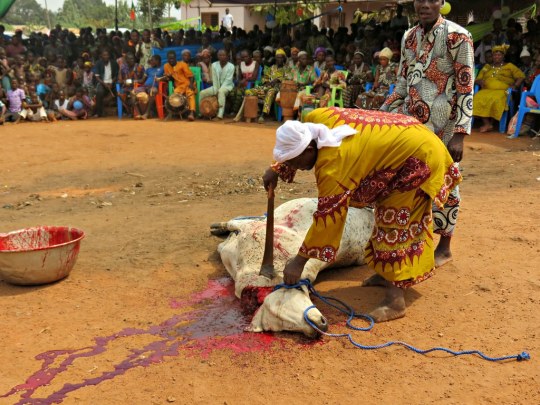
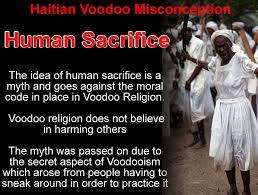
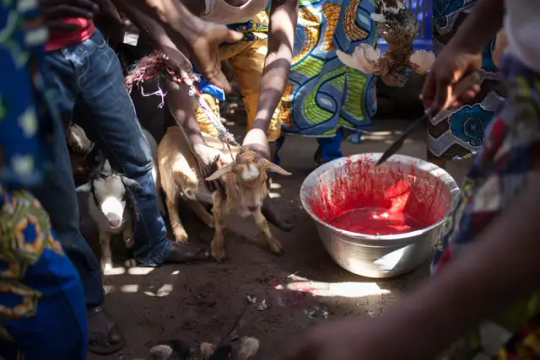
What is an EBO sacrifice?
Ebo, or sacrifice, is a broad concept including all types of sacrifices and offerings to the Orisha. These can include candles, fruit, candy, and various items or actions that may be appreciated by the Orisha. Ritual sacrifice is an important part of the beliefs and practices of Orisha worshipers.

Various scholars describe Vodou as one of the world's most maligned and misunderstood religions. Its reputation is notorious; in broader Anglophone and Francophone society, it has been widely associated with sorcery, witchcraft, and black magic. In U.S. popular culture, for instance, Haitian Vodou is usually portrayed as destructive and malevolent, attitudes often linked with anti-African racism. Non-practitioners have often depicted Vodou in literature, theater, and film; in many cases, such as the films White Zombie (1932) and London Voodoo (2004), these promote sensationalist views of the religion. The lack of any central Vodou authority has hindered efforts to combat these negative representations.
Since the 1990s, evangelical Protestantism has grown in Haiti, generating tensions with Vodouists; these Protestants regard Vodou as Satanic, and unlike the Roman Catholic authorities have generally refused to compromise with Vodouists

Leviticus 17:11 is the Old Testament’s central statement about the significance of blood in the sacrificial system. God, speaking to Moses, declares: “For the life of a creature is in the blood, and I have given it to you to make atonement for yourselves on the altar; it is the blood that makes atonement for one’s life.”
A “sacrifice” is defined as the offering up of something precious for a cause or a reason. Making atonement is satisfying someone or something for an offense committed. The Leviticus verse can be read more clearly now: God said, “I have given it to you (the creature’s life, which is in its blood) to make atonement for yourselves (covering the offense you have committed against Me).” In other words, those who are covered by the blood sacrifice are set free from the consequences of sin.

Ancient Egypt was at the forefront of domestication, and some of the earliest archeological evidence suggesting animal sacrifice comes from Egypt. However, animal sacrifice was not a central practice of Egyptian religion, but was rather a peripherical occurrence that happened away from worshippers. The oldest Egyptian burial sites containing animal remains originate from the Badari culture of Upper Egypt, which flourished between 4400 and 4000 BCE. Sheep and goats were found buried in their own graves at one site, while at another site gazelles were found at the feet of several human burials. At a cemetery uncovered at Hierakonpolis and dated to 3000 BCE, the remains of a much wider variety of animals were found, including non-domestic species such as baboons and hippopotami, which may have been sacrificed in honor of powerful former citizens or buried near their former owners. According to Herodotus, later Dynastic Egyptian animal sacrifice became restricted to livestock – sheep, cattle, swine and geese – with sets of rituals and rules to describe each type of sacrifice

Worship in ancient Greek religion typically consisted of sacrificing domestic animals at the altar with hymn and prayer. The altar was outside any temple building, and might not be associated with a temple at all. The animal, which should be perfect of its kind, is decorated with garlands and the like, and led in procession to the altar, a girl with a basket on her head containing the concealed knife leading the way. After various rituals the animal is slaughtered over the altar, as it falls all the women present "must cry out in high, shrill tones". Its blood is collected and poured over the altar. It is butchered on the spot and various internal organs, bones and other inedible parts burnt as the deity's portion of the offering, while the meat is removed to be prepared for the participants to eat; the leading figures tasting it on the spot. The temple usually kept the skin, to sell to tanners. The fact that the humans got more use from the sacrifice than the deity had not escaped the Greeks, and is often the subject of humour in Greek comedy

Practices of Hindu animal sacrifice are mostly associated with Shaktism, Shaiva Agamas and in currents of folk Hinduism called Kulamarga strongly rooted in local tribal traditions. Animal sacrifices were carried out in ancient times in India. Some later minor Puranas forbid animal sacrifice though the upapurana, Kalika Purana, describes it in detail.
Shaktism traditions
A male buffalo calf about to be sacrificed by a priest in the Durga Puja festival. The buffalo sacrifice practice, however, is rare in contemporary India.
Animal sacrifices are performed mainly at temples following the Shakti school of Hinduism where the female nature of Brahman is worshipped in the form of Kali and Durga. These traditions are followed in parts of eastern states of India at Hindu temples in Assam and West Bengal India and Nepal where goats, chickens and sometimes water buffalos are sacrificed.
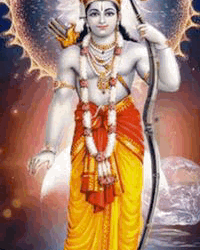
Sacrifice of Animals has less to do with worshipping of Satan or being evil.
Sacrifices are not all blood some are symbolic, fruits, money, clothes, aspects of life.
Kobe Byrant had to sacrifice friends and family to become who he is.
We all make some type of symbolic sacrifice that can be time or if you are a Celebrity, you sacrifice your privacy.
Abrahamic Cultures and Europeans superstition towards non-European cultures tend to cause our consciousness of Sacrifices.

#african#afrakan#kemetic dreams#africans#brownskin#afrakans#brown skin#african culture#afrakan spirituality#hindu#hinduism#hindu mythology#hindublr#hindu calendar#lord shiva#mahadev#hindustan#hanuman#hindutva#europeans#european#blood sacrifice#blood#sacrifice#the sacred feminine#sacramento#the sacred masculine#sacred heart#kobe byrant#shava
46 notes
·
View notes
Note
curly showing pony voudou???
ok so i dont hc the shepards to like, practice vodou THAT much honestly, but they do have some practices from haitian vodou and ill talk about 2 of em
the shepards have an altar in their house for ppl theyve lost, and the shepards let pony add johnny onto it too, the altar is for honoring and communicating w the dead and u can put pictures, personal items, and u can put offerings on it as well!!! whenever he comes over he adds something to it for johnny
theres this candle that u can write the name of ppl who wronged u and u just let it burn till the wax gets to their name and angela would have that candle but tim uses it sometimes too, as extra measures in case his own version if karma wasnt enough for the world and they wanted to help him out
i think them having each others vodou dolls could b cool (and just to let yall know, vodou dolls r used for protection, its not what u think, they r usually blessed and used for positive outcomes)
12 notes
·
View notes
Note
Saw your book post and I think you've confused a few things...
You seem to mix up Hoodoo and Vodou a lot. They are not the same. Hoodoo is not a closed practice nor religion. It's just fking weird and poser-ish if someone claims it without ever growing up in the culture for it. But many Hoodoo practioners will tell you their practice is not closed. Vodou/Santeria is closed.
Also saying to be careful not to fall into Hoodoo while doing Conjure... you know rootwork is similar across all cultures right? This just feels like a gatekeeping statement and prevents people from really digging into their folkwork by making them constantly worried they're appropriating.
The thing with smudging: you make no mention of which kind of smudging is closed. You just said it generally, which is a bit ridiculous. Burning herbs for the sake of energy and cleansing is not inherently a Native Indigenous practice. Bayabas, or guava leaves, have been used in the Philippines pre-colonialism. Frankenincense in Europe and Old Christianity. Ti Leaves in Hawaii. Rose in Ancient Rome, and Blue Lotus in Ancient Egypt. As a latina, and as half of one myself🇨🇺, we both know our people love to use incense at altars. SAGE, particularly white sage, is where the line is drawn. Same with palo santo. I agree with your points, but I think you need to be specific if you're being critical.
Much love from 🇵🇭✨️
Hello there anon! I see you sent another ask apologizing for assuming I was Latina, and you're quite forgiven! I am as they say white as white can be.
As a white person I went to an American BIPOC friend of mine in order to answer all of this as honestly as I possibly could. Hoodoo by means of origin IS a closed practice. It's roots come from Ghana and was created in America as a very specific response to slavery. Both Hoodoo and Vodu are tribal/family based, and both require a initiation of sorts through community in order to practice them. Vodu's roots are in Haiti, and through community, enslavement, and initiation needed through the "family" as some groups of Vodu practioners call themselves, are required therefore it is also closed. I shall include some links below to help with the distinction of Hoodoo and Vodu and why they are both closed practices/religions. Hoodoo could be considered a religion in Louisiana specifically due to it's usage there and sometimes it's blending with Vodu. https://medium.com/@empressnaima/my-hoodoo-initiation-5086e375e378 https://en.wikipedia.org/wiki/Hoodoo_(spirituality) https://en.wikipedia.org/wiki/Haitian_Vodou https://cswr.hds.harvard.edu/news/magic-matters/2021/11/10 https://brizomagazine.com/2020/06/15/the-appropriation-of-magic-how-white-people-demonised-voodoo/ Now that I've cleared up through BIPOC voices/history/links on why Hoodoo is in fact closed...let me address the specific comment of
"You know rootwork is similar across all cultures right? This just feels like a gatekeeping statement and prevents people from really digging into their folkwork by making them constantly worried they're appropriating." Rootwork in of itself is a Hoodoo term iirc, but I may be wrong on that front. As for worrying about appropriation...white people SHOULD BE worried about appropriating. Hell currently in America we still through simply social climate and judicial systems are failing our BIPOC/Indigenous communities.
As a folk worker who has some herbalism that stems from Cherokee and Creek peoples I am so beyond careful to make sure my practice is not appropriating from them. White people demolished them, slaughtered them, and took away their homes and sacred spaces, hell, we stole and demolished their LANGUAGE. And you're telling me I don't need to worry about taking anything else from them? The best option is to contact the people you believe is being appropriated from and just...asking them. Wild concept I know. Make friends that are not from your station! Send emails and letters to community leaders in these appropriated cultures in an honest and respectful way to see if what you're studying is appropriated. A good example of this was I found recently an ancestor of mine worked closely with what she called "Grandmama Spider". Grandmother Spider is a Cherokee creation deity. Referencing the above horrors and terrors us white folk did and are still doing to the Cherokee people...I will not be following in her footsteps. Individuals like Cat/Catherin Yronwode has perpetrated that Hoodoo is open, and has caused catastrophic issues with her large standing in the American Folk Magic world. A link to an open letter about Cat Yronwode and her severe appropriation/dismissal of the real history of New Orleans Voodoo being "fake" and "not a slave based religion" is here: https://conjureart.blogspot.com/2013/10/open-letter-to-cat-yronwode-and-lucky.html I don't want to pick on any specific religions/groups of people but all you have to do is read through ONE "witchcraft for beginners" book written in America or England and find at least two stolen items from Indigenous Americans AND the BIPOC/Black community. It's THAT common. Totems and Spirit Animals? Not entirely Indigenous but the ones these authors are teaching about ARE. The same goes for the word smudging, when I mention a book has smudging in it I am talking about white sage. White Americans love to use their white sage with an illegal owl feather and a shell to hold their bundle of sage in. The word smudging in of itself comes from the 15th to 16th century Germanic language and was actually talking about using smoke to rid a home or building of insect infestations. The word we SHOULD be using for cleansing with smoke should simply be...smoke cleansing. It avoids the person reading from having to guess if it's appropriated or not.
Having said all of that I guess all of this boils down to one thing: Listen to the voices of the cultures first. If they say something's appropriated? Stop. If they say it's closed? Stop. I have no authority on anything at all, but if I can speak up just once and give others a platform to say, "Hey this is kinda fucked up" I will. It's the least I as a white person can do.
#witchblr#appalachian folk magic#folk magic#buggy answers#tw: slavery#tw: appropriation#tw: atrocities#Whew this one took a while.
22 notes
·
View notes
Text
Lubana is a cemetery spirit; the sacred snake of the charnel house. She is a spirit of birth, death, life, and sex who unblocks roads, removing obstacles from the paths of her devotees. She opens the gates of opportunity. Lubana is a cleansing spirit who removes negativity and spiritual and psychic toxins (snake venom as antidote). Can she remove a curse? Yes, she can.
Lubana began her incarnation as a Congolese Simbi spirit. Transported to the island of Hispaniola by the slave trade; she was a comparatively obscure local spirit until the late 20th century when the image of Mami Waters arrived in the Americas. The German circus poster of a snake charmer that catapulted Mami Waters to worldwide fame served as a portal for Lubana, too. Dominican immigrants brought Lubana to the United States; her fame continues to increase.
Congolese snake spirits were transported to the Caribbean; so was an old traditional style of Iberian spellcasting, incorporating verbal petitions to aggressive spirits requesting that they impose the spell-caster’s will on others. For instance, Spanish love/domination spells invoke Saint Martha the Dominator, requesting that she force an errant man to return to the spell-caster so subservient that he’s crawling on his belly like a snake. Lubana is now invoked in virtually identical love-spells whose goal is to force a man to crawl afterthe woman he once scorned, begging on his knees. (If the spell goes correctly; the man wants to do this. He feels compelled. He’s unresisting.)
Although Lubana is also commonly called Filomena, she is not identified with the young virgin martyr, Saint Philomena. Instead, she is syncretized to Saint Martha the Dominator. In Latin America, the snake-charmer image associated elsewhere with Mami Waters was identified as Saint Martha who is usually depicted with a dragon or great reptile.
Snake Oil, a mass produced condition oil (magical formula oil), is used to dress Lubana’s candles and summon her. Serpentine-inspired fine perfume oils like Black Phoenix Alchemy Lab’s Snake Oil may also accomplish this purpose. If you want to visit her, Lubana lives in the cemetery.
The other names she goes by: Filomena Lubana; Maitresse Luban; Metresa Lubana; Loubana; Luban
Classified as a Metrasa- the Caribbean island of Hispaniola is divided into two nations: Haiti and the Dominican Republic. Although Vodou has historically been associated with Haiti, related traditions exist in the Dominican Republic, too. The Dominican tradition is usually spelled Vodo or referred to as the twenty-One Divisions. Metresa is the term used to describe Vodo female spirits. It is a Spanish adaptation of the French word Maîtresse or, in English, Mistress.
MANIFESTATION:
Lubana’s true form is a snake but she may also manifest as a woman who displays serpentine behaviour (hissing, slithering, sticking out her tongue …). She may have snakelike physical features. Regardless of form, Lubana doesn’t speak: she hisses or communicates telepathically. (Telepathically she may use words and be quite articulate.)
ICONOGRAPHY:
The image most frequently used to depict Lubana is that of the snake charmer more commonly associated with Mami Waters. Votive statues based on that image are now mass produced and may be labeled Martha the Dominator (Santa Marta Dominadora). Different versions of the statue exist; some hew closely to the old poster even duplicating the hairstyle; others depict her with significantly fairer complexion. Martha/Lubana wears a green dress and holds a snake. A small boy sitting on her lap holds a smaller snake. The second figure in the old poster has been reinterpreted as a child saved from a snake by the snake charmer.
SPIRIT ALLIES:
She works closely with Anaisa Pyé, Sili Kenwa, Baron Del Cementario, and other Barons.
DAY:
Monday
SACRED DATE:
29 July (feast day of Saint Martha)
COLOURS:
Green, black, purple
ANIMAL:
Snake
NUMBER:
5
ALTAR:
Her offerings are traditionally placed on the floor, although theoretically, a snake climbs anywhere.
OFFERINGS:
Cigars; unsweetened black coffee; Malta beverage (not malt liquor; Malta is a type of carbonated drink whose primary ingredient is barley, which is allowed to ferment or ”malt”). Malta is available worldwide, sold under different brand names; it may also be sold as champagne cola, although it’s neither champagne nor cola; however, beware: although Malta may be called champagne cola, not every champagne cola is Malta.
TRADITIONAL OFFERING FOR LUBANA
Place one whole, unbroken, raw egg on a bed of coffee grounds
Drizzle with honey and Malta and serve
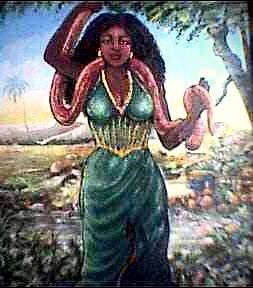
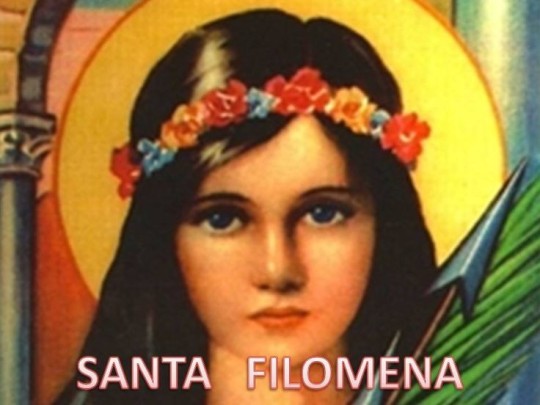
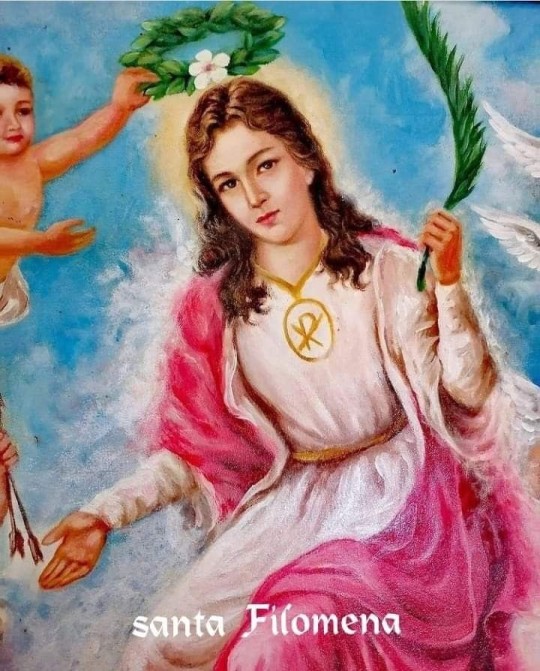
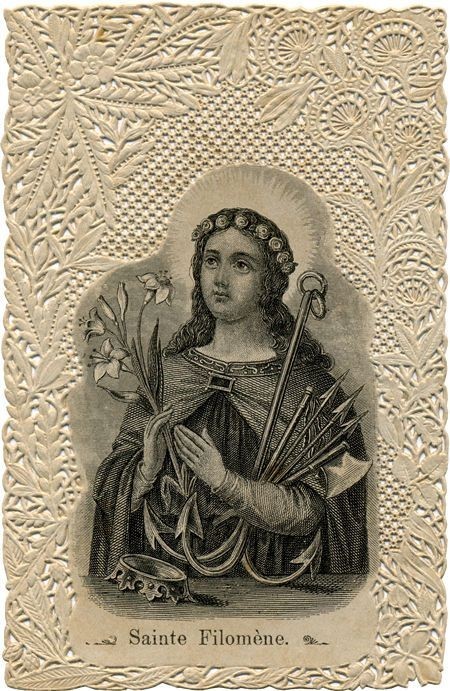
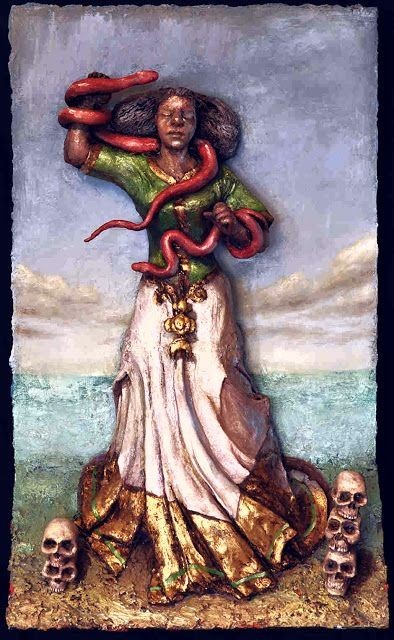
6 notes
·
View notes
Text
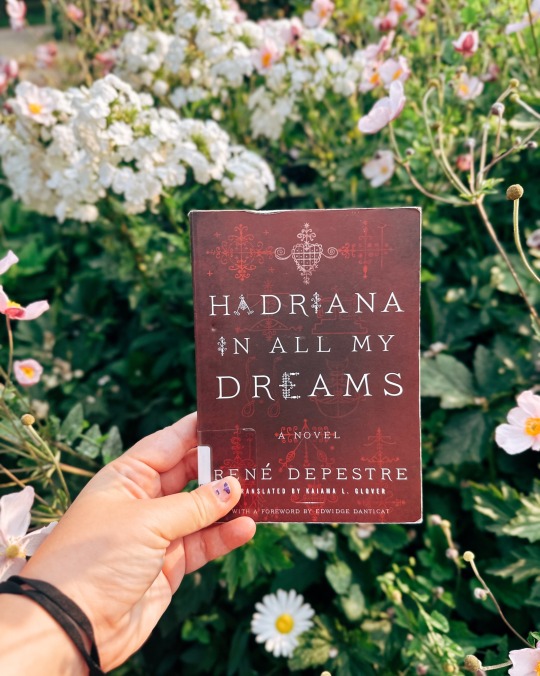
This autumn, read about a different kind of zombie. Hadriana in All My Dreams by René Depestre, translated by Kaima L. Glover, is short, wild, and fun.
As I wrote for Book Riot: "It’s 1938 in the town of Jacmel, and a beautiful young French woman named Hadriana is getting married. But when she falls dead at her own wedding altar, the celebration becomes a funeral, and Vodou culture comes to the forefront as the town worries about the possibility of someone trying to zombify the gorgeous young woman who died too soon, sharing their own stories of zombies and the supernatural. It’s a book full of sex and surprises, a short read that is part nostalgia, part ghost story, and part satire." (Content warnings for sexual violence/rape, death.)
Can’t get enough of Haitian zombies? Dive into Dézafi by Frankétienne, translated by Asselin Charles, a politically-charged, poetic story about a daughter of the owner of a zombie-run plantation who tries to reanimate one of the workers—and accidentally unleashes a rebellion.
#hadriana in all my dreams#rené depestre#books in translation#translated literature#haitian literature#my book reviews
17 notes
·
View notes
Text
Some Pictures I Took From Fet Gede.
I enjoyed this years Fet Gede. This Sosyete not only celebrates the spirits here in the city. But respects and honors others Day of the Dead traditions also.
Fet Gede in Haiti is just such a past-honoring event. Known as the Festival of the Ancestors, Fet Gede ( = The Sacred Dead) is the Vodou equivalent of Mardi Gras, the Mexican Day of the Dead, and Halloween, all in one. So everyone dresses up.
But here are some pics I took while I was there. Check back for the video.

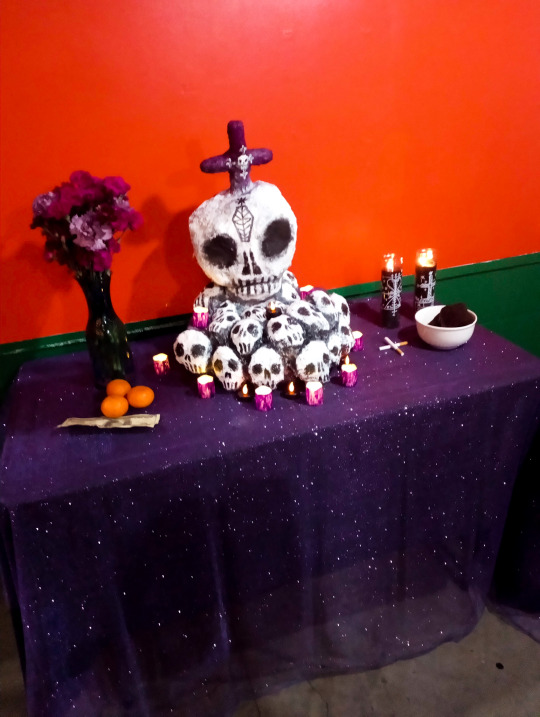
Spirit Statue. Gede Statue
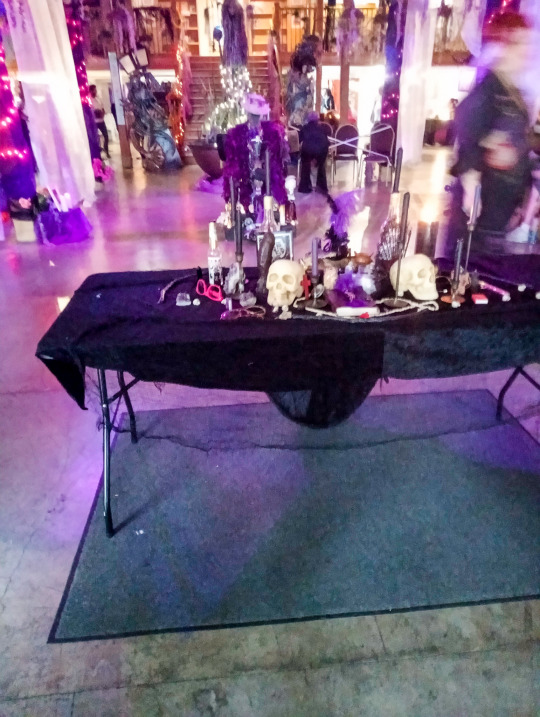
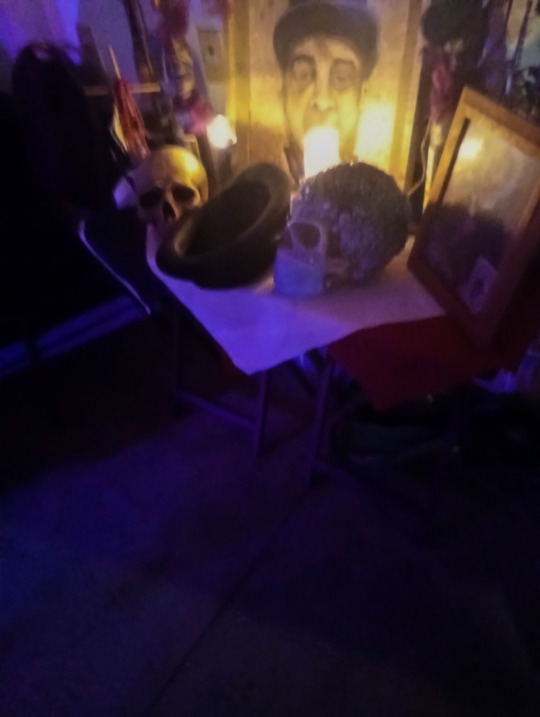
Baron Altar. Baron La Croix
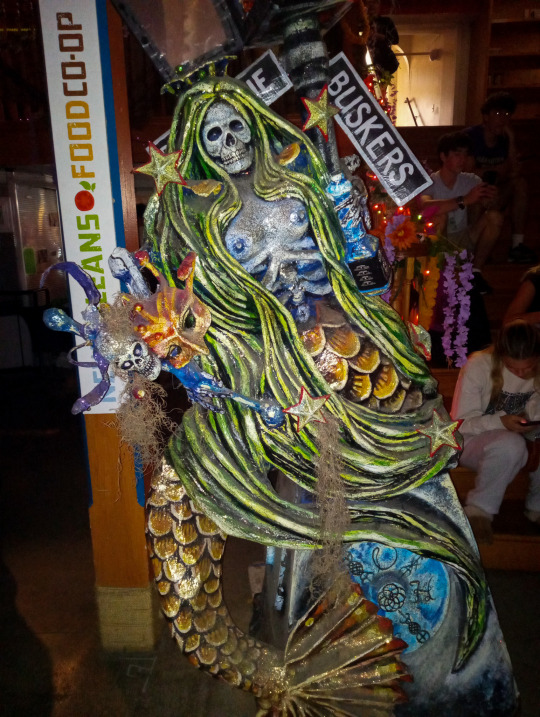
Some kind of death mermaid statue.
It's cool.

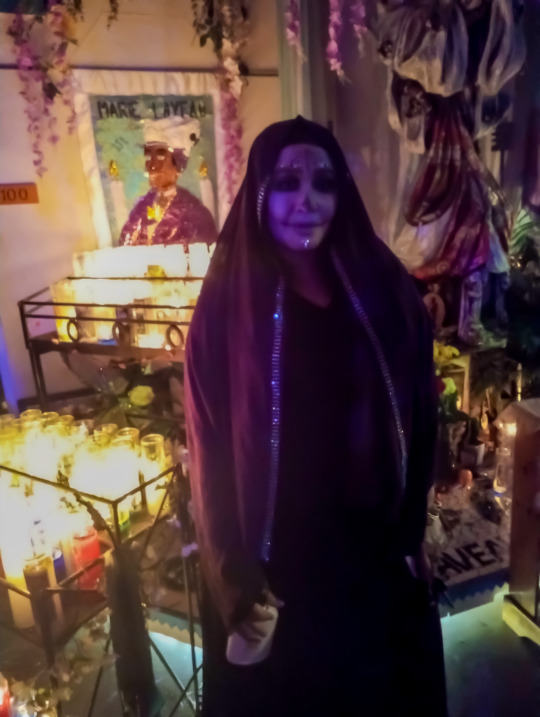
One of the children of the spirits dancers in the Oufo. Dressed as a spirit of the Dead. Gede.
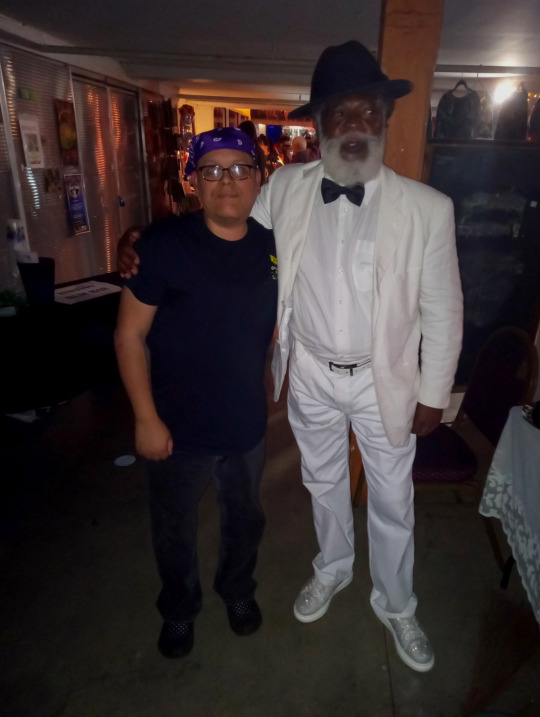
���Me and Ghanaian Priest & Master Drummer Osofo Andrew.
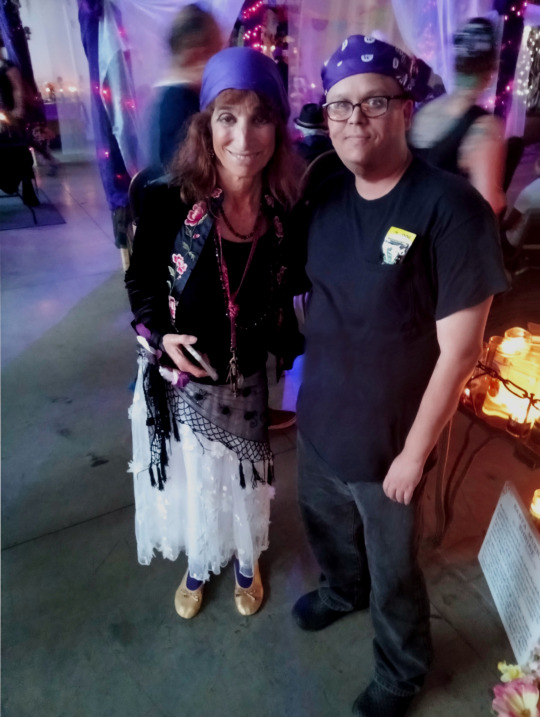
🖕 Me & Mambo Sally.
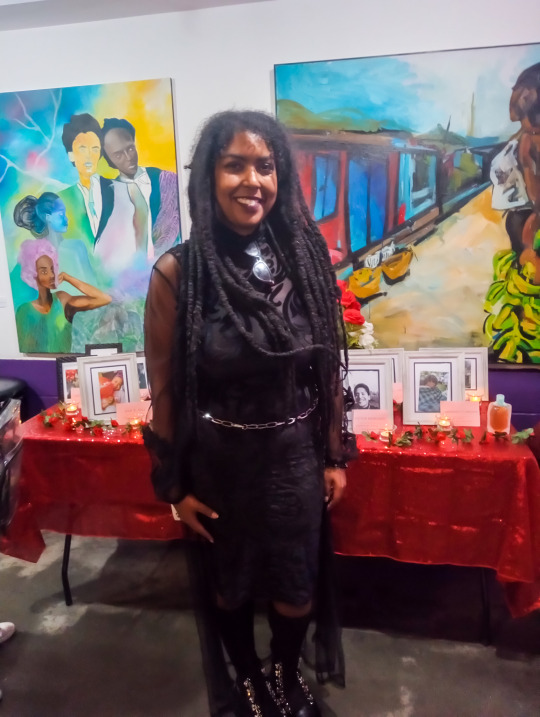
Taja Nicholle is a Afro-Indigenous Certified Death Doula/Grief Support Counselor. She's does death healing, cleansings readings, Sound Healing, etc.
https://www.therisingroseco.com/

I meet these women and though there costumes were cool.


🖕 the top is of a Haitian Oungan he and Andrew and some others released the Gede spirits after the Fet Gede was over. We told them thank you and then we all sayed a prayer.
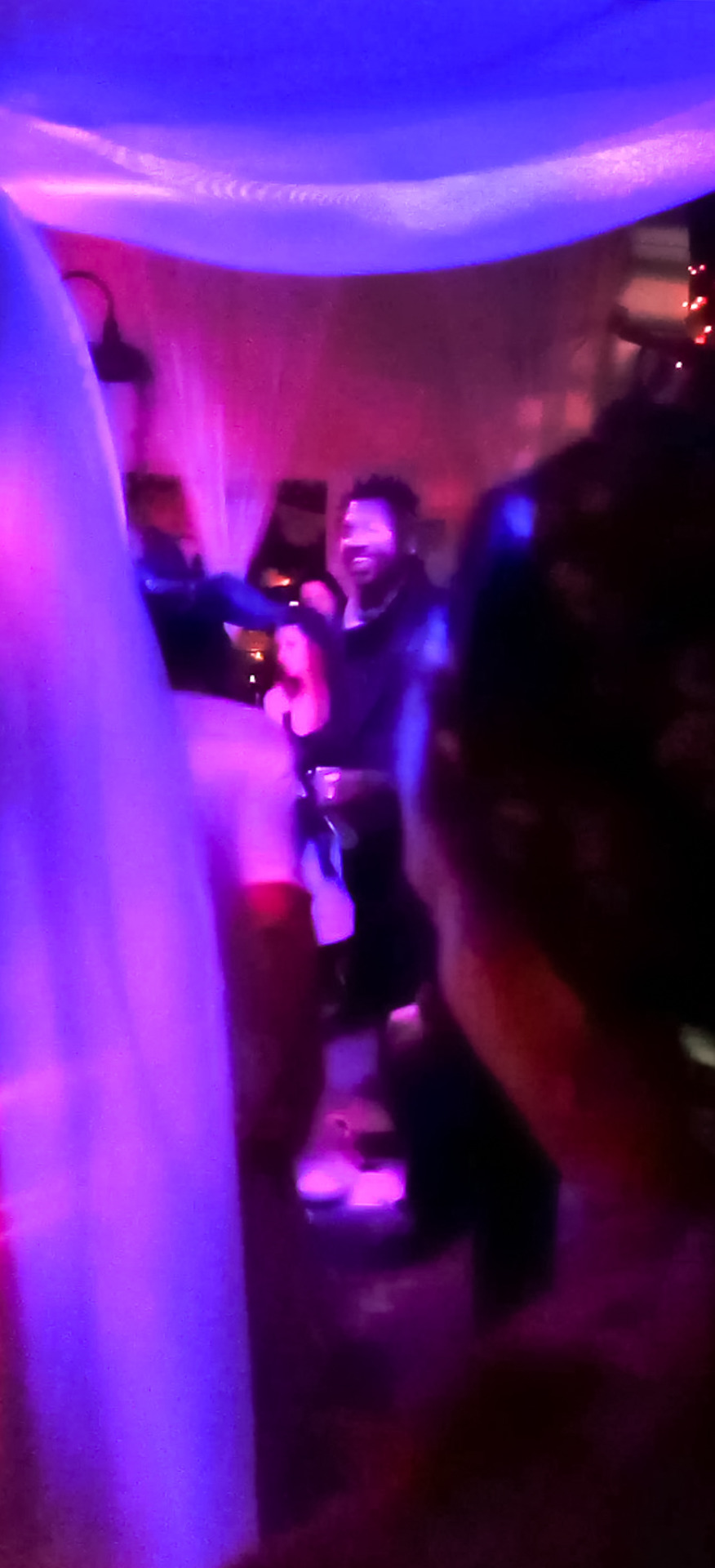
This is the Haitian Oungan with the white powder on his face he was dancing and smoking cigarettes the spirits came and jumped a few people that night.
#like and/or reblog!#google search#follow my blog#ask me anything#haitian vodou priest#haitian vodou#Fet Gede#voodoo priestess#Voodoo altar#dia de muertos#catrina#Baron La Croix#new orleans voodoo#Blessing.#new post
7 notes
·
View notes
Text
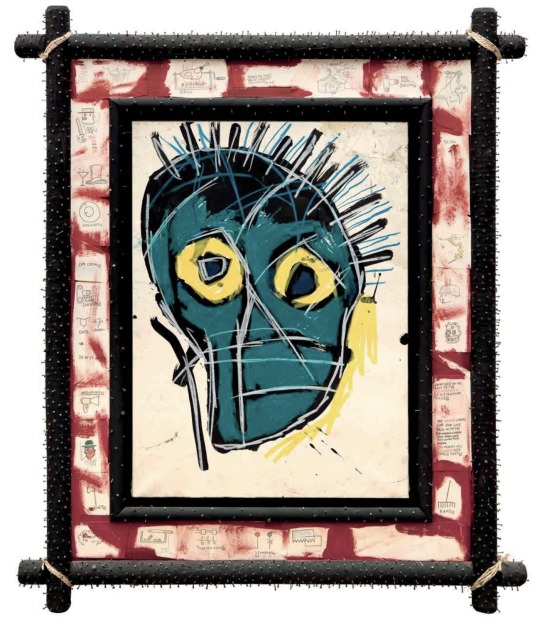
There's a whole european racist fantasy element to Andre Heller calling the nail-studded frame he forged a Basquiat Vodou altar. But I don't get into that now. Instead, I just posted the 2016 interview Heller did for the art dealer brochure, where he was selling his forged Basquiat frame for $3 million, and the real Basquiat drawing inside it for $2 million. Because he absolutely and very carefully presented it as by Basquiat, and he only called it a "prank" after his bullshit started to get found out and he scrambled to buy his forgery back so he wouldn't get arrested. And he didn't!
[update: whoops forgot the link. also here is part 1 and part 2 about luna luna being bought by live nation and drake for a fraction of what it's hyped as, the art dealing dynasty involved but almost invisible in the deal, and the private foundation controlled by the family of the employees of the reclusive copper heiress whose 29000 acre quail hunting ranch in san diego enabled them to buy jean michel basquiat's monkey butt circus, respectively.]
#andre heller#jean-michel basquiat#luna luna#forgery#white guy literally cut up his actual basquiat drawing and collaged it into his forged basquiat frame and said ooh voodoo
3 notes
·
View notes
Text

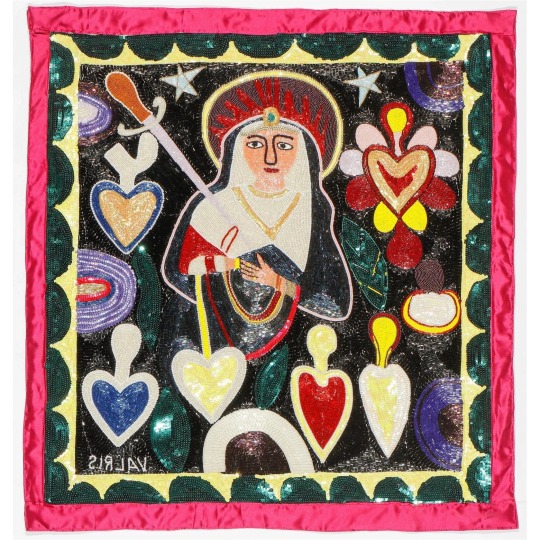
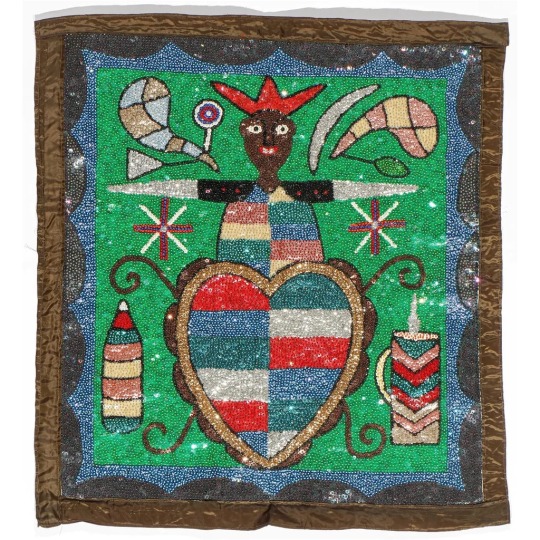
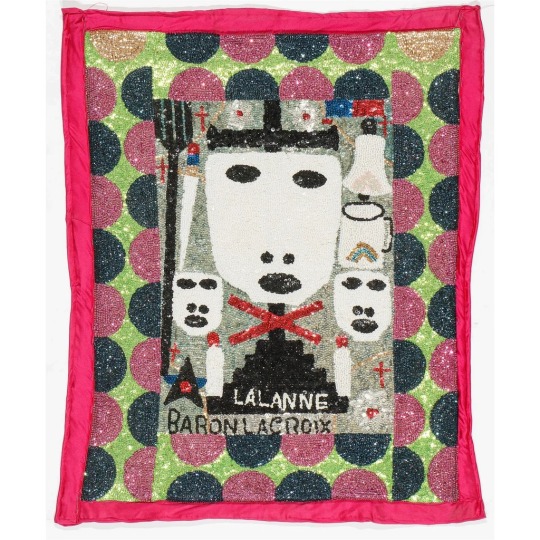


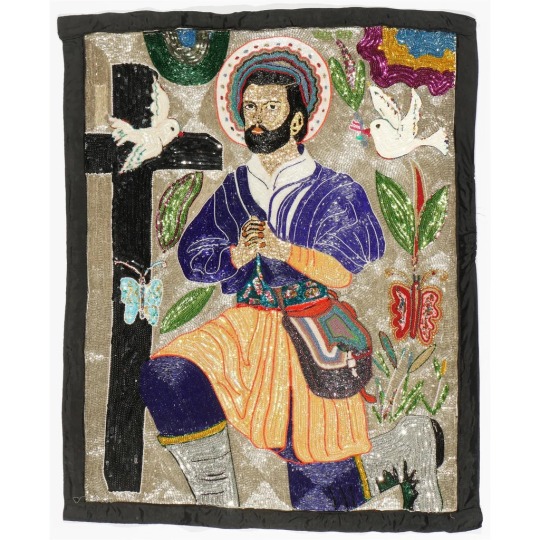

I’ve been meaning to show off at least one of our fantastic entirely handmade Haitian Vodou flags, also known as Drapo, but it was too difficult to chose just one. And so, take a gander all of the ones we currently have! Haitian Vodou flags are displayed on or near altars. In religious ceremonies, processions carry the flags into sacred spaces, and worshippers may wear them over their shoulders as they are joined together with the loa, or spirits. Truly an art-form, flag makers hand stitch each sequin to the fabric, after tracing out their design, and often anchoring it with a seed bead in its center. Follow the link in our profile to take a closer look!
https://beadsofparadisenyc.com/collections/haitian-flags
4 notes
·
View notes
Text
BARON DE LA MORT [1][2][3]
Real World Inspiration & Potential Flaws / Alternative Concepts
REAL WORLD INSPIRATION

Pictured: Modern rendition of Baron Samedi
Baron de la Mort was inspired by the Haitian lwa Baron Samedi (Bawon Samdi).
Baron Samedi is Guardian of the Cemetery and Patriarch of the Gede rite. The Gede rite traces its origins to West Africa, where the vodún Gede appears in Dahomean mythology as "mythical first ancestor of the original inhabitants of the plateau of Abomey"[1]. The Gedevi-Yoruba were the original inhabitants of the Abomey plateau who were imperialized by the Aja-Fon kingdom of Dahomey. They became something akin to an “untouchable” class, subjugated at the bottom of the social hierarchy, and enslaved circa 1625-1724[2]. Baron Samedi himself seems to have emerged in Haiti, given his title of “Baron”[3].
There are multiple, contradictory descriptions of Baron Samedi from the early 20th century, which either reflect regional differences or the difficulties foreigners experienced in attempting to research Haitian Vodou[4]. For this reason, Baron de la Mort is specifically inspired by the following descriptions of Baron Samedi, where his traits are clearly defined and he is easily delineated from Gede Nibo. As these sources are from the early 20th century, it is possible they are inconsistent with how Baron Samedi is described in the present day.
In Haitian Vodou, the lwa are organized by rite (rit) and famille (fanmi). For example, OGOU is actually the name of a family of spirits (fanmi OGOU) that includes Ogou Feray, Ogou Badagri, Ogou Balendjo, and so on. While they both belong to the Gede rite, Baron Samedi belongs to a different fanmi from Gede Nibo[5].
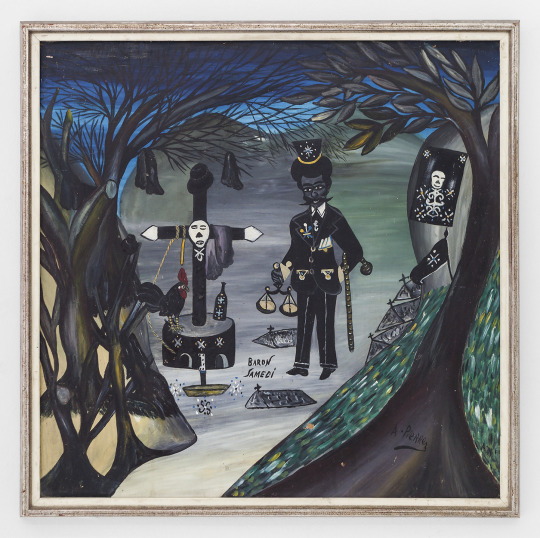
Pictured: Baron Samedi, by Andre Pierre
Baron Samedi can be distinguished from (Papa) Gede Nibo by his style and demeanor. It is Papa Gede / Gede Nibo – not Baron Samedi – who is infamously lewd, playful, and likened to a “clown”[6]. Conversely, Baron Samedi is not playful, but an intimidating hot spirit who dresses in black as the undertaker. Many Haitian sources echo Paul C. Mocombe, who states that Baron symbolizes the concept of ‘Death’, while Gede symbolizes the ‘Spirits of the ancestors - The crossing from life to death’[7]. A fearsome and powerful lwa, Baron Samedi is Lord over the Dead and the Supreme Judge of the Earth .
As described by Milo Marcelin[8]:
“Baron-Samedi, père et chef des Guédé, est le maître des cimetières. On le représente sous les traits d’un noir robuste, qui porte une longue barbe blanche; il est vêtu d’une redingote, coiffé d’un melon ou d’un chapeau haut de forme, ganté de blanc; il a toujours en main un bâton coco-macaque et une bouteille de clairin ou rhum blanc. Une croix noire, sur laquelle figure parfois un crâne, est son Emblème.”
TRANSLATION:
“Baron Samedi, father and chief of the Guede, is the master of cemeteries. He is represented with the traits of a robust Black man, who sports a long white beard; he is dressed in a frock coat, dons a bowler hat or a top hat, white gloves; he always has a coco macaque stick in hand and a bottle of kleren or white rum. A black cross, on which sometimes appears a skull, is his Emblem.”
As described by Andre Pierre:
“It’s Baron Samedi who punishes and pardons on earth. Neither the living nor the dead can escape Baron Samedi. They must be judged by him .”
A lengthy section of Milo Marcelin’s Mythologie Vodou, Vol. II describes Baron Samedi’s core traits and personality[8]. In this section, Marcelin describes how an angered Baron Samedi interrupts a service. He is foul-mouthed as he takes the offerings from the altar and throws them violently into the courtyard. He threatens everyone before he leaves. Nobody smiles or laughs at this; the faithful are afraid of him:
“Han-Han! fit Baron, vous ne pouvez pas nous recevoir aujourd'hui! Eh bien, foutre, je gâte le service!
Il se dirigea vers le pè ou autel du temple, prit toutes les offrandes et les jeta violemment dans la cour. Puis il prononça de sinistres menaces et se retira.
Les fidèles, craignant qu'il n'y ait de conflit entre Baron et les autres loas ou dieux, lui consacrent, ainsi qu'à son escorte, un hounfô-r ou temple à l'écart.”
Here is how Baron Samedi is described by Karen McCarthy Brown in her biography of Mama Lola[9]:
“As Baron Samdi (Baron Saturday), head of all the Gede, he arrives as a corpse; his body falls to the ground, stiff. In a mood of solemnity and sadness, the people surround him, bind his jaw with a white cloth, stuff his nostrils and ears with cotton, and powder his face to reproduce the pallor of a cadaver. When Baron Samdi possesses Alourdes, which he does infrequently, the tense psychodrama of death ends only when time doubles back on itself, when Ti Malis displaces Baron and a childish giggle escapes from the mouth of the corpse. Then, and only then, does the tension snap and the fun begin.”
Donald Cosentino contrasted the Barons (Bawons) against the Guede (Gede), like so[10]:
“Descended from these fearsome elders are a limitless band of capricious children, known collectively as the Gede spirits, who are as beloved as the Bawons are feared. The Gede are tricksters who cavort in opposition to the senior Bawons. The Gede always laugh, but Bawon never does. Bawon kills, but the Gede heal. Bawon is a skeleton, but the Gede are rotting flesh. Bawon is boss, but the Gede are bums. Bawon imposes harsh order, but the Gede blow it off. Bawon has secrets, the Gede always tell the truth. Bawon tends to dress conservatively, often in a top hat and dress coat, the attire of an undertaker. His face is powdered white and he needs sunglasses because his eyes can’t take the light after his underground work. Typically one lens is missing. His colors are purple and black. In art and action the Gede lwa morph into louts, rock stars, black-gowned college graduates, hipsters—whatever’s new on the social horizon.”
While Baron Samedi can be frightening, he is not evil. He is actually described as a paternal figure.

Pictured: Les Trois Esprits Du Cimetière, by Andre Pierre
“Gede is the secretary of the Bawon, who is the judge. Bawon is the father of the family. Andre Pierre.” [11]
“Bawon Samdi is Adam. Guardian of the cemetery. Guardian of all the dead. Everyone's father. And Gran Brijit is Eve. Andre Pierre“ [11]
There is no evidence that Baron Samedi was a feature of Louisiana Voudou prior to the ‘revitalization’ of the late 20th century, which was heavily influenced by Haitian Vodou[12]. The differences in his portrayal in New Orleans are either explained by true regional differences that exist(ed) in Haitian Vodou, or cultural appropriation.
There is a fun theory that a Devil figure from African American folklore of the South is actually Baron Samedi[13]. In real-life, this theory is unlikely to be true, but a few elements of this Devil figure were incorporated into Baron de la Mort to make Soul Deals possible with him. This is why it is also why he has a minor feline theme, where he is associated with the black cat. Baron Samedi is frequently identified with Saint Expedite[8]. Songs for him describe him as the Master of the Cemetery, and his power over human mortality[14].
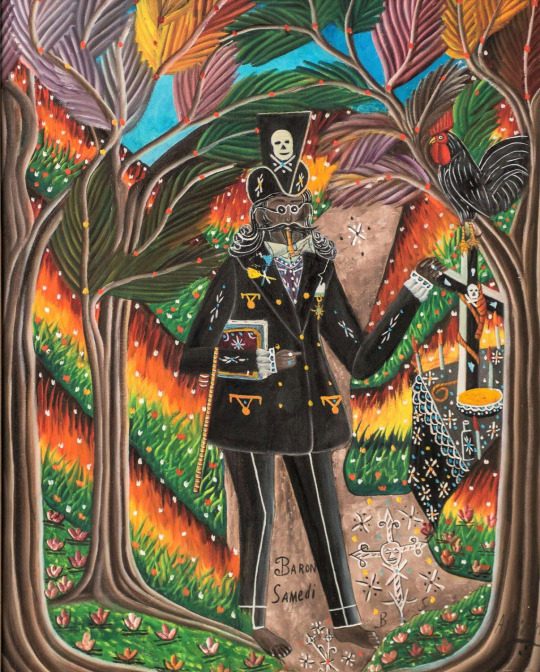
Pictured: Baron Samdi, by Andre Pierre
Bawon Samdi mèt simityè,
Èske gen moun sou latè k pa ka mouri?
Moun yo mache pale, yo di yo se towo.
Nan sèkèy la, Bawon, n a wè longè yo!
Baron Samedi, Master of the Cemetery,
Is there anyone on Earth who cannot die?
People talk all that talk, they say they’re [big as] bulls.
In the coffin, Baron, we’ll see what size they are!
POTENTIAL FLAWS / ALTERNATIVE CONCEPTS
The inclusion of this character could be criticized, on the grounds that Baron Samedi was probably not a feature of 19th Century Louisiana Voudou. The aforementioned theory that connects Baron Samedi to the Devil figure of the American South is probably incorrect. Interestingly, other spirits belonging to the Gede rite might have been brought to New Orleans in the years following the Haitian Revolution.
In Voodoo: An African American Religion, Jeffrey E. Anderson hypothesizes that Grand Zombi might be one of the Gede lwa[12]. In Haitian Vodou, there are a couple of spirits in the Gede rite whose names contain the word “Zombi”, namely Jean Zombi (Jan Zonbi) and Captain Zombi (Kaptèn Zonbi)[15].
Grand Zombi was one of the most important spirits in Louisiana Voudou, where songs sung for him establish a connection to death and gris-gris[16]:
“L’appe vini, li grand Zombi,
Pou fé mouri, pou fé gri-gri!”
“Congo li! Congo li!
Voudou prie, Grand zombie!
Li grand Zombie qui fé muri.
Oh! ya! ye!”
If Anderson’s hypothesis is correct, “The Devil in the High Silk Hat” might not be Baron Samedi but Grand Zombi, who might have some sort of connection to Jean Zombi or Captain Zombi. Alternatively, Grand Zombi might have been a Gede spirit that was unique to Louisiana Voudou, as there was also a spirit named Zombí that was probably unique to Cuban Vodú [17].
Then again, the above is merely speculation. Several sources from New Orleans do not connect Grand Zombi to the Gede rite, but identify him with the divine serpent, if not Nzambi Mpungu — the Supreme Being from Kongo Spirituality[18]. As such, Anderson’s hypothesis might not be correct.
A different spirit appears in the historical record — a child-like spirit named “Charlo”, who was described by Helen Pitkin Scherz in her fictional novel An Angel by Brevet[19]. While it is obviously problematic to rely on works of fiction, several of the spirits in this novel have real-world counterparts, suggesting that “Charlo” might have been a real feature of Louisiana Voudou. This is merely my own speculation, but this “Charlo” might be Charlot, a spirit that was worshiped by Brigitte Mackandal and other followers of Francois Mackandal[20]. If not Charlot, “Charlo” might originate in Ti Chal Lakwa, a lwa that belongs to the Gede rite[5].
For these reasons, Baron de la Mort should arguably be replaced with a character inspired by Grand Zombi, who could be styled after Jean Zombi, Captain Zombi, or Nzambi Mpungu, depending on how one chooses to interpret the historical record. To fill the void of Maman de la Vie and maintain a balanced gender ratio, Sir Duke / Grandmother Serpent could be split into a pair of twins. Alternatively, Maman could be replaced with a different female character.
A second, arguably stronger case could be made to remove Baron de la Mort from this lineup, replacing him with a character inspired by Xɛbyoso.

Pictured: Artistic Rendition of Xɛbyoso (Hevioso)
Upon reviewing the historical record, there are actually many clues that Xɛbyoso— or possibly his counterpart Shango — was a feature of Louisiana Voudou[21]. Given the prominence of Xɛbyoso in Dahomean mythology and the prominence of Shango in Yoruba mythology, it would be very easy to insert this character into this lineup of Seven godly “siblings”. Since both ethnic groups were present in the American South, there is some liberty in deciding whether to base this character on Xɛbyoso, Shango, or a combination of both.
Xɛbyoso is an especially strong candidate to change the public perception of Louisiana Voudou with a degree of historical accuracy. Many people have been misled to believe that Voudou (Voodoo) is evil, but Xɛbyoso is a vodún of justice. It is said that he hurls his axe (thunderbolts) at his enemies, to strike down the wicked[22]:
…Xɛbyoso acquit de Sɛgbo-Lisa une force redoutable, une force qui le métamorphosa en un oiseau pyrogène pour qu’il fût en mesure de parcourir terres et airs, brousses et forêts, et même mers. Sɛgbo-Lisa le dota également d’une arme redoutable, une arme en forme d’une hache néolithique, Sosyͻvi, que Xɛbyoso emporta au monde. Pour le châtiment des coupables, Xɛbyoso la lançait à ses cibles pour les foudroyer, tuant et humains et animaux, abattant et arbres et lianes…
TRANSLATION:
…Xɛbyoso acquired from Segbo-Lisa a formidable power, a power that transformed him into a firebird for him to be able to traverse land and air, brushes and forests, and even the seas. Segbo-Lisa likewise gave him a formidable weapon, a weapon in the form of a neolithic axe, Sosyͻvi, that Xɛbyoso carries to the world. For punishing the guilty, Xɛbyoso throws it as his targets to strike them down, killing humans and animals, felling trees and vines…
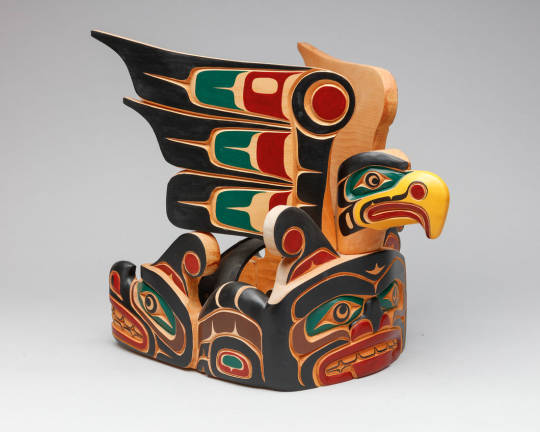
Pictured: Thunderbird and Sisiutl Headdress by Kwakwaka'wakw artist Bill Henderson. The Kwakwaka'wakw Thunderbird is likened to Xɛbyoso.
There is also an interesting connection between Xɛbyoso and a recurring figure from folklore of Missouri Voudou called “T’undeh-Buhd” - Thunder-Bird[23]. Owen attributes its origins to the Algonquin spirit of the storm, but there are also similarities between this Voudou Thunder-Bird and Xɛbyoso.
According to Cossi Augustin Ahoga, the “Xɛ” in Xɛbyoso means “bird”, while the “so” means “lightning”[22]. He also likens Xɛbyoso to the Thunderbird of indigenous mythology, like so:
“Xɛ (oiseau) se comprend au sens métaphorique, qui est un principe de la loi d’analogie dans la religion. Cela rappelle la même préfiguration chez les Indiens et les Kwakiutl où les dieux « Ahayuta » et « Amoncas » sont ailés, « Oiseau de Tonnerre »…”
TRANSLATION:
“Xɛ (bird) is understood in the metaphorical sense, which is a principle of analogy in the religion. This recalls the same prefiguration among the Indians and the Kwakiutl where the gods "Ahayuta" and "Amoncas" are winged, "Thunderbird"...”
As such, another reason for the inclusion of a Xɛbyoso-like character would be to pay tribute to the influences of Native American cultures on Louisiana Voudou. One of the criticisms of Maya Deren is that she misattributed the origins of Haitian Vodou to the indigenous people of Haiti (the Taíno), when its true origins lie in West and Central Africa. Conversely, I do not know that anyone denies the influence Native Americans had on Louisiana Voudou. The similarities between Native American and West African traditions are something to be remarked on, and you can find cross-cultural exchange between these groups in the historical record[12][24]. The Mardi Gras Indians are part of the Black Masking tradition of New Orleans, which pays tribute to the role Native Americans played in supporting marronage[25]. Xɛbyoso – the lightning bird – is a prime candidate to embody the positive relationship between the African American and Native American communities.
For the above reasons, the decision to exclude a Xɛbyoso/Shango-like character is quite questionable. It would not be necessary to exclude Baron de la Mort entirely, but to remove him from the Seven Original Creations of Bon Dieu, making him one of the only two other beings in existence to achieve godhood.
That being said, I think it is a mistake to remove Baron de la Mort or Maman de la Vie. There is just too much story potential for these two characters in a story that is set in the afterlife. Unlike many of their siblings, there are tons of ways these characters could interact with the existing cast. It is also natural to introduce cool new mechanics, such as Soul Deals with The god of Death, his ability to Steal Souls, and his Divine Judgment in the form of Real Hell. Removing them from the seven-character lineup necessitates adding two characters, which is even less viable than introducing seven new characters. This is why I decided to leave him and his wife in this lineup, at the cost of historical accuracy.
The American zombie is but a bastardized version of the Haitian zonbi[26]. In real life, a zonbi is when you extract tetrodotoxin from a puffer fish to induce just enough brain damage to make someone appear dead, then go dig up their “corpse” and force them to become your slave[27]. It’s a horribly evil thing to do! …but also extremely fascinating. Those unaware of the science behind this understand it in religious terms. The Baron’s power of Soul Theft is my attempt to take this concept and fit it into the existing mechanics of this fictional world, where I took inspiration from Milo Marcelin’s description of Baron Samedi[28]. The Haitian concept of souls and its African origins are an extremely interesting subject, but I have probably not done the best job of conveying the basics of this idea without making it awkward in its implementation. For this reason, this should just be viewed as a draft; a native Haitian perspective could surely improve on this concept and better integrate it into the existing mechanics.
The initial concept for the Baron Samedi character was horribly offensive, as it perpetuated a myth that erroneously associates him with the LGBTI community; I have since attempted to correct this.
Currently, Baron de la Mort has his own little band of auxiliary characters — those being his adoptive children, and someone who sold his soul to him. Among these, the controversial additions would be Port-au-Prince and Lanmò, who are both LGBTI. One could argue for the removal of these characters, on the grounds that they falsely associate the Gede rite with homosexuality and transgenderism.
The decision to include these characters is not to perpetuate this misconception; rather, it is inspired by the state of homophobic and transphobic violence in Haiti. When the 2010 earthquake hit Haiti, people stood outside the office of the AIDS service organization Action Civique Contre le VIH (ACCV), shouting “Mo an masisi!” – “Death to the masisi!” The bodies of those killed in the collapse were unclaimed for days, “their families so utterly rejected them for being openly gay” [29]. The killings of homosexuals, like Charot Jeudy, and transgender people, like Mickerlange François, have become regular occurrences—encouraged by Christian missionaries, who blamed the LGBTI community (La communauté M) for the earthquake[30]. If you want to make a real criticism of the Christian church, this is an extremely evil thing this institution is responsible for. Hence, why Port-at-Prince is homosexual, while Lanmò is transgender.
I would argue against the outright removal of either of these characters, where their style and/or species could be changed instead. Between the two of them, I don’t see why it would be necessary to remove Lanmò. He is not one of Baron de la Mort’s adoptive children, but a Demon who sold his soul to him. The Baron does not condone or promote his transgender identity, but he feels nothing towards it at all. Nor does he care whether Lanmò lives or dies, as their relationship is purely contractual; there is no love between these characters, whatsoever. Lanmò only dresses like The Baron because he sold his soul to him, and he is completely terrified of him because he has his wife hostage.
I would also be against removing Port-au-Prince, as both he and Lanmò are necessary to complete the gender balancing of this ensemble—one to embody androgyny and the other to embody gynandry. I also think they work if they are both included, because they balance each other out; one is the object of The Baron’s paternal affection, the other is the target of his terrorization
An alternative concept would remove Port-au-Prince from The Baron’s adoptive family, where he could be species-swapped into an Angel in Heaven who is somehow associated with Lady Love. The reason he remains one of the adoptive children is because he is loosely inspired by Milo Marcelin’s description of Gede Masaka, who is described as an “androgyne”[31]; for this reason, the fictional counterpart is an androgynous drag queen. This is not to suggest that the real-life Gede Masaka is androgynous, as I do not know if that is true. Instead, I am taking advantage of this story being set in a fictional world to pay tribute to Milo Marcelin’s Mythologie Vodou. Importantly, Port-au-Prince is the only one of his siblings who has an LGBTI identity. He was adopted, not because the Gede are associated with homosexuality or sexual fluidity, but because Death is an absolute for all of humankind: gay, straight, or otherwise. In this sense, Baron de la Mort is “everyone’s father”.
One of the things that really moved me about the documentary Des Hommes et Dieux [Kanopy] [Vimeo] was the parents featured in the film, who didn’t reject their children. This is in part because of their religious beliefs—that they were born that way to serve the lwa. In America, this is something that is little known about Haitian Vodou—that it protects the LGBTI community from the bigotry and violence brought about by religious imperialism of the Christian church.
In terms of media representation, it is important not just to show characters who are themselves LGBT, but the parents of those characters. Importantly, this representation cannot be superficial—not the stock “lesbian” or “gay parent” background characters, who have no speaking lines and are easily censored. You have to actually show how these parents grappled with this reveal. What was their thought process? How did they handle the shock of it, and why didn’t they reject their children? This matters because it might be able to change the minds of some parents in the real world. Family rejection has a huge, negative impact on LGBT children, and several minority communities are disproportionately affected by this trend. Intersectional representation is scarce, and often feels inauthentic—especially when a creator takes characters who were clearly originally planned to be white, racebends them, and doesn’t account for cultural differences. This would be a unique opportunity to show this aspect of Haitian culture, in an authentic way.
For this reason, Baron de la Mort is written to directly contrast with the fathers of two different characters: Angel Dust, and Moxxie. The Baron neither promotes nor despises homosexuality; rather, he prioritizes his personal motives over bending to a moral code. This was how he lived his life as a human, and is part of why he was chosen to become The god of Death. And so, he adopts Port-au-Prince, simply because he somehow reminds him of one of his past children, and didn’t want to deliver him to Hell.
I decided to rewrite one element of The Baron’s backstory, where he no longer had a homosexual son in his past human life. I completely forgot about this, but the son of François Duvalier (“Baby Doc”) was (in)famously rumored to be gay. It is therefore necessary to remove this element.
The purpose of this character’s backstory is not to romanticize gang violence. If executed correctly, it is meant to make the viewer reflect on the circumstances that have led to the current crisis in Haiti, and the role America has played.
One of the most evil ideas spread by Christian missionaries is that the Haitian Revolution — the first and only successful slave revolt on the scale of nations — was brought about by a pact with the Devil. This is used to blame Haitians for the instability and poverty that has plagued their nation ever since. In reality, America played a critical role in the current crisis in Haiti, as it is one of the major powers that forced the country into massive debt by taking out high interest loans. The atrocities committed under American occupation and at Guantanamo Bay are ever-relevant today, under the presidency of Donald Trump and continued colonization efforts of the Christian missionaries. The manner in which Haitian refugees continue to be dehumanized is an issue an American audience needs to be made aware of.
This is a very adult and serious topic that can’t be over-simplified, or treated without utmost maturity. As such, this backstory was designed for a darker spin-off series that is intended for an older audience, as a set up for a charity run that could be used to donate to an organization in Haiti, or Haitians fleeing to America. Otherwise, the gritty realities of this character’s backstory should not be shown, only implied. The key flashback would not go into his criminal history, but show the moment of his assassination.
Baron de la Mort is supposed to be a genuinely unsettling presence, a character who is initially shrouded in mystery, who reminds the viewer of their own mortality. A flashback would be employed to humanize him, and to reveal the true identities of The Seven Lesser gods. The scene of his assassination reveals several things about his character: (1) that he used to be human (2) that he is from another timeline (3) what sort of life he lived (4) what he thought about in his final moments (5) the moment he encountered Bon Dieu, and the man became a god. As he was dying, images of his children and grandchildren flashed through his mind; in spite of his extraordinarily brutal life, he was a good father and grandfather. If executed correctly, this may be sufficient to humanize him, and might achieve this goal in the most efficient way possible. It is not necessary for him to have had a gay son in his past human life; in fact, it might be more poignant if he didn’t but chose to adopt Port-au-Prince anyways.
This character is best utilized in a darker spin-off that takes place in the same world, expanding on the settings of Earth and the afterlife. Barring this, his character can still work as the “grim patriarch” over a motley crew of henchmen / “capricious children”. In terms of personality, he was inspired by Gomez Addams, Don Corleone, and Gustavo Fring; however, I do not want him to feel like a cheap rip-off of any of these, but an interesting character in his own right.
Here, it is crucial not to collapse his moral complexity. He cannot be described as “pure evil” or “a hero”; for his extraordinary ruthlessness, moral neutrality, and of course—the manner in which his Death predicted the Mass Extinction of Humanity—he was the perfect candidate to become Mortality itself.
Several aspects of Baron de la Mort are inspired by Don Corleone, as he is described in The Godfather book and films. The intent behind this decision was to fit him into the pre-established world, which has several gangster-themed characters. However, the challenge here is that Don Corleone dressed quite similarly to a real historical figure — the dictator François Duvalier, who styled himself after Baron Samedi. This might be another reason to remove this character from the lineup, as viewers might think he’s supposed to be François Duvalier. For this reason, he is written to have risen to power after the fall of the Tonton Macoute, his voice is super-deep instead of nasally, and I have attempted to visually differentiate him from Duvalier; however, a radical redesign might be necessary to avoid this association.
#commentary#baron de la mort (hazbin hotel)#the gods (hazbin hotel)#hazbin hotel oc#as a warning there is discussion of homophobic and transphobic violence in haiti including murders#homophobia#transphobia
1 note
·
View note
Note
Hi Alex! Why on this vodou altar we can see Santa Muerte statues? Red and black. Thanks!
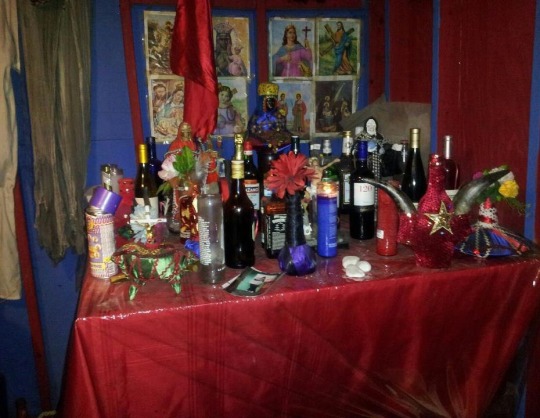
Personal preference of the practitioner, I imagine. Statues of holy death are given to Gede sometimes or even for some Petwo lwa because of how they look and aren't a representation of Santa Muerte in this context. Haitians and Haitian Vodou practitioners are incredibly creative and use things for their lwa that have personal meaning regardless of what they mean out in the world.
5 notes
·
View notes
Note
also i'm curious, are you into ATR?
I joined Espiritismo which isn't really closed. But that was recent. I didn't set up an altar until like 2022. I am into ATRs and I've had several Vodou readings.
1 note
·
View note